לקראת פתיחת הליגה, הנה אינציקלופדיית כל שחקני החמישייה והספסלים של כל הקבוצות לפי אזורים – אזור כל יום. העתיקו את הלינק ושימרו עד סוף העונה!
האזור האטלנטי
Boston Celtics: 2014-15 roster
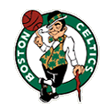
Here are our player scouting reports and 2014-15 projections for the Boston Celtics. (Note: Kevin Pelton's stat projections are for players expected to play 250 or more minutes in 2014-15.)
PROJECTED STARTERS
RAJON RONDO, PG
| Pelton's 2014-15 Projections | ||||
| Player card » | ||||

Scouting report
+ Superb athlete with huge hands, long arms, quick feet and springy hops.
+ Outstanding on-ball defender who occasionally gambles too much.
+ No range on jump shot. Prefers to probe for assists rather than move the ball quickly.
Analysis
So, Danny Ainge, what are you going to do? That, ultimately, is the biggest issue facing the Celtics this season, as Ainge must figure out whether to trade Rondo before he becomes a free agent this summer and, if he does, how much value in return is acceptable. The latter is the trickier part because Rondo's status in the league's point guard hierarchy remains very much in question.
On the one hand, you have a player who averaged 11-plus assists for three straight seasons, whose quickness, long arms, huge hands and hops make him a terror on defense, a fantastic rebounder and an effective penetrator, and whose midrange jumper has improved considerably. On the other hand, Rondo has developed a rep as an assist monger, has no 3-point range and has played only 68 games over the past two seasons due to a torn ACL.
Then there's this: In Rondo's career, he has never ranked above the 42nd percentile in offensive production, according to Synergy. Over the past three seasons, he hasn't been better than the 23rd percentile. That's a fairly damning indictment of his style of play, which critics say eschews good ball movement in favor of over-dribbling and padding his assist numbers. SportVU's player tracking data speak to that issue: The past season, Rondo led the league in assist opportunities per game (20), but was 20th in secondary assists per game — equal to Kobe Bryant and behind Brandon Jennings.
By selecting Marcus Smart in the draft, Ainge certainly signaled that he expects this to be Rondo's final year in Boston. Whether Rondo's tenure ends before the season does, though, is very much in question.
AVERY BRADLEY, G
| Pelton's 2014-15 Projections | ||||
| Player card » | ||||

Scouting report
+ Tenacious defender, particularly against the pick-and-roll.
+ Improved 3-point shooter, especially in spot-up role.
+ Point guard size, but no point guard skills. Struggles to create for others.
Analysis
The Celtics were roundly mocked for re-signing Bradley to a four-year, $32 million contract this summer, especially when they seemed to be bidding against themselves. That indeed is a lot of money for a player SCHOENE projects to have a negative WARP (minus-1.3) this season. But the Celtics are clearly banking on continued improvement from the former high school phenom who won't turn 24 until November.
Bradley is coming off his best season in terms of raw numbers. He started 58 games and averaged 14.9 ppg, shot 39.5 percent from 3-point range and collected 1.1 spg. At the same time, increased playing time led to decreased efficiency: His DRtg was 109, by far the worst of his career, and his 100 ORtg was right around his atrocious career mark of 96.
That said, Bradley has a rep as an excellent defender. The numbers the past season — when Synergy ranked him in the 43rd percentile — didn't support that contention, but Bradley was in the 84th percentile or better in each of his first three seasons, including 95th in 2012-13. He is strong and quick with the mentality to match, and that's why he is able to compensate for his 6-foot-2 height when covering 2-guards. Bradley is particularly effective against the pick-and-roll, a trait that can't be appreciated enough, given the continued use of the play around the league and the continued influx of young point guards who can drive and shoot.
Bradley has the makings of an effective role player, especially if he can improve his corner 3-point shooting to match his 40-plus percent mark from the wings. But given the contract the Celtics handed him, they might expect even more. To this point, he hasn't shown he's capable of that kind of production.
JEFF GREEN, SF
| Pelton's 2014-15 Projections | ||||
| Player card » | ||||
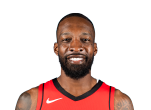
Scouting report
+ Good court vision, despite low assist numbers.
+ Typically a strong spot-up shooter. Struggled the past season.
+ Skilled wing with knack for scoring. Inconsistent offensive production.
Analysis
It seems ages ago Green was the third member of the Thunder's young triumvirate, along withKevin Durant and Russell Westbrook. Since then, his move to Boston forced him out of his preferred supporting role and into one with far more responsibility, and that doesn't suit his game.
Green has been a good spot-up shooter in the past, but he struggled from all over the past season. He hit just 41.2 percent of his field goals and 34.1 percent of his 3's. In 2012-13, he hit 45.7 percent of his corner 3-pointers; the past season, that rate fell to 39 percent. Not coincidentally, Green's usage rate was a career-high 23.6. It's quite possible the Celtics are asking too much of him, especially when they were 5.4 points worse per 48 minutes when he was on the court.
It has been documented over time that Green is a bit of a tweener. He is best utilized as a stretch 4 on offense, but he is far more effective guarding small forwards, and he tends to get bullied on the block. Green's rebounding rate is also low for a power forward; he has averaged just 5.6 boards per 36 minutes in his career. None of this, though, is necessarily Green's fault. He simply needs more support, and right now the Celtics aren't suited to give it to him.
JARED SULLINGER, PF
| Pelton's 2014-15 Projections | ||||
| Player card » | ||||
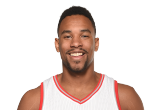
Scouting report
+ Wide body can score on the block and off pick-and-pop, thanks to improving midrange game.
+ Force on the glass, particularly at the offensive end.
+ Not a rim protector but solid in pick-and-roll coverage.
Analysis
Sullinger emerged as an effective post player during his second season and averaged 13.3 ppg and 8.1 rpg in just 27.6 mpg. But while the production was there, Sullinger has some efficiency issues to solve as he develops into a high-level big man.
Sullinger's field goal percentage dropped from .493 as a rookie to an unacceptable .427. Part of the problem was an over-reliance on 3-pointers — he took 208 and made just 56, or 26.9 percent. But he was also less effective around the basket. As a rookie, he hit 54.3 percent of his shots inside 8 feet and 52.6 percent of his attempts from 8-to-16 feet. The past season, those numbers dropped to 52.2 percent and 31.7 percent, respectively. Oddly, Sullinger seemed to specialize in long 2's and hit just more than 50 percent of his shots from the top of the key and the elbows.
Clearly, Sullinger needs to find a way to use his power to compensate for a relative lack of height and poor lift around the hoop or risk becoming a pick-and-pop big man similar to Big Baby Davis. His work on the boards also buys him more time to develop as a scorer because he grabs the Celtics plenty of extra possessions (4.3 offensive rebounds per 36 minutes).
Defensively, Sullinger actually ranked well above average against both the pick-and-roll defender and roll man, according to Synergy, which no doubt earned him Brad Stevens' trust as the season went on. SCHOENE offers a mixed evaluation, though, and sees Sullinger as similar to Carlos Boozer and also Sean May. That's a wide range for a wide body.
KELLY OLYNYK, PF/C
| Pelton's 2014-15 Projections | ||||
| Player card » | ||||
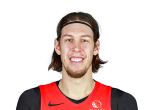
Scouting report
+ Skilled big man with good touch away from the basket and solid footwork around the rim.
+ Defensively challenged. Not physical enough to guard centers.
+ Excellent passer from the high post. Projects as a facilitator.
Analysis
The world got to see some of what Olynyk can be when in April, he posted 16.6 ppg, 7.3 rpg and 2.3 apg in 25.8 mpg while shooting more than 50 percent from the field and 40 percent from 3-point range. He had the look of a player who could eventually initiate offense from the elbow, step outside against plodding centers and still punish smaller defenders on the block.
Granted, Olynyk's full season wasn't nearly as successful; he struggled in spurts as a rookie adapting to a more physical game. He ranked in just the 14th percentile in Synergy in post-up offense, was not nearly as effective in pick-and-roll situations as someone with his size and skill should be, and struggled mightily on defense, particularly on the block.
Still, those were all expected growing pains. SCHOENE projects Olynyk to average a solid 10.4 ppg, 6.2 rpg and 1.8 apg as a second-year player while contributing a 3.4 WARP. The Celtics ultimately will need to pair him with a physical, defensive-oriented big man, but for now, they should be content to let Olynyk develop at his own pace.
RESERVES
BRANDON BASS, PF
| Pelton's 2014-15 Projections | ||||
| Player card » | ||||

Scouting report
+ Effective midrange shooter. Adds some floor-spacing qualities.
+ Not an effective rebounder for his size. Poor passer.
+ Not a good team defender. Doesn't use body for rebounds anymore.
Analysis
Bass seemed like a prime candidate for the Celtics to ship to a contender at the deadline, but ultimately, he remained in green and white to finish out a productive season. He started all but nine games and averaged 11.1 ppg and 5.7 rpg while posting a 111 ORtg on a team that struggled for consistent production.
A hybrid forward with solid quickness to match his strength, Bass performed well around the hoop this past season and ranked in the 82nd percentile in low-post scoring. He also knows his limits: Bass attempted just six 3-pointers all season but was above-average from 8-to-16 feet, where he attempted roughly 26 percent of his field goals. That midrange stroke has made him an effective pick-and-pop player over the years, though he offsets some of that productivity with poor rebounding for his position.
Bass had a strong season on the defensive end as well and ranked in Synergy's 72nd percentile. He excelled against spot-up shooters (odd, given his size) and allowed just .737 points per play (95th percentile). In the past, he has been highly successful in showing and recovering against the pick-and-roll. The past season's subpar numbers look more like a random blip — another trait that could make him valuable on a winning team. Given that he is 29, he doesn't fit into the Celtics' future plans, though he does help stabilize the present. Still, given those facts, Boston would be wise to explore deals this winter.
TYLER ZELLER, C
| Pelton's 2014-15 Projections | ||||
| Player card » | ||||

Scouting report
+ Plays a finesse game in the middle. Struggles against physical opponents.
+ Good midrange jump shooter. Runs the floor well for his size.
+ Uses length to alter shots on D.
Analysis
The Celtics snagged Zeller as part of the Cavaliers' effort to clear cap room to sign LeBron James, and he could provide a strong return on a minor investment. Although Zeller is constantly fighting a "soft" label, the skinny 7-footer is a skilled offensive player who can step away from the hoop and knock down open jump shots.
Zeller was an above-average shooter from both 8-to-16 feet and 16-to-24 feet, which suggests he could also become a capable corner 3-point shooter in time. According to Synergy, he ranked in the league's 86th percentile as a spot-up shooter, though he wasn't utilized often enough (37 total plays).
Considering his size, Zeller also moves his feet well, which, coupled with soft hands, makes him a threat in transition. He is also a reasonably skilled shot-blocker and averaged 1.3 blocks per 36 minutes. However, he is foul prone, which is part of the reason he only logged 15 mpg the past season. The other involves the rest of his defense. He struggles against more physical low-post players, despite his length, and Zeller's help skills often get exposed by quick guards on the pick-and-roll. He did hold opponents to 48.3 percent shooting at the rim and grabbed 9.7 boards per 36 minutes, numbers that suggest additional playing time for the 24-year-old Zeller might be warranted in his new home.
MARCUS THORNTON, SG
| Pelton's 2014-15 Projections | ||||
| Player card » | ||||
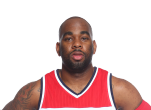
Scouting report
+ Shooter. That's his game. Anything else is gravy.
+ Underrated with the ball in his hands, particularly on the pick-and-roll.
+ Doesn't create for others. Struggles to contain guards off the dribble.
Analysis
Now with his fourth team since he joined the league in 2009-10, Thornton can score in bunches, particularly from deep. He is coming off his worst shooting season, though, in which he hit just 39.4 percent of his field goals and 34.5 percent of his 3-pointers in stints with Sacramento and Brooklyn. The Celtics hope a comfortable setting can help him find the skills that produced 14.5 points per game as a rookie and 18.7 ppg three seasons ago.
Although Thornton is best utilized as a spot-up shooter (91st percentile, according to Synergy), he has other offensive skills. He was well above average running the pick-and-roll the past season, given that he can shoot off the dribble and get to the rim. Oddly, he struggled to finish in the lane and shot just 50 percent within 8 feet of the basket; in 2012-13, he connected on 61.7 percent of his close attempts.
Although Thornton can get buckets, he hasn't figured out how to do that for his teammates; his court vision is lacking. He is also a poor defender — his career defensive rating is just 111. But that's not why he's in the league. Thornton can change a game off the bench with his scoring acumen, and that makes him valuable in any uniform.
MARCUS SMART, PG
| Pelton's 2014-15 Projections | ||||
| Player card » | ||||
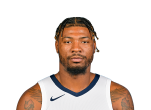
Scouting report
+ Strong, athletic point guard with excellent leadership qualities.
+ Poor perimeter shooter. Lacks a go-to offensive skill.
+ Not a pure point guard. Must prove he can run a team.
Analysis
Smart's much-publicized dust-up with a Texas Tech fan this past winter presented a false narrative about his personality, at least in the eyes of NBA execs. The fact is they liked him as a prospect largely because of his attitude and intangible qualities, not in spite of them. Indeed, his ability to fit in with a team is not in question. His ability to run one is a different story.
Smart owned a physical advantage in most college games, as few point guards could handle his 6-foot-4, 220-pound frame. With speed to match his strength, Smart had little trouble putting up huge raw numbers: 18.0 ppg, 5.9 rpg and 4.8 apg as a sophomore at Oklahoma State. Dig deeper, though, and problems emerge. In two seasons, he shot just 41.3 percent from the field and 29.5 percent from 3-point range. According to Synergy, he ranked in just the 69th percentile among offensive players the past season, with 0.941 points per play. And though his pick-and-roll numbers were solid — 74th percentile — it's not clear they will translate to the NBA. Opposing guards will be able to go under the screen against him until he can beat them from deep, and that hurts any player's ability to initiate an offense.
Defensively, Smart should be much more prepared to contribute right away. There's no question he can physically compete with NBA point guards, and he plays hard at that end, which is the most important step toward effective defense. Smart is also a favorite of advanced stats mavens. Indeed, SCHOENE likes what it sees, projects him to produce 3.7 WARP as a rookie and lists Tyreke Evans, James Harden, Chris Paul and John Wall as comparable rookies. If the stats are right, Boston will have little problem moving on from Rajon Rondo and starting the Smart Era in earnest.
GERALD WALLACE, SF
| Pelton's 2014-15 Projections | ||||
| Player card » | ||||
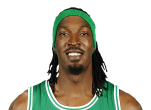
Scouting report
+ No longer an elite athlete. Can't score in the half court.
+ Effectiveness as a rebounder and shot-blocker has dwindled.
+ Still a ball hawk on defense. High steal rate.
Analysis
In his prime, Wallace was a joy to watch — a phenomenal athlete with a motor to match who could influence a game without ever having a play run for him. But injuries and age have gradually stripped away the physical skills that helped him average two-plus blocks and steals in the same season (2005-06), to the point that the 32-year-old forward is clearly on his last legs.
Wallace appeared in just 58 games in 2013-14, averaged 24.4 minutes and produced the second-worst offensive rating of his career (95) and his second-worst defensive rating (106). His steal rate was still as good as ever — 1.9 per 36 minutes — but he is no longer a shot-blocking threat, as he averaged just 0.4 per 36. His offensive rebound rate — 2.8 percent — was also the worst of his career and another sign his bounce has declined.
Given how much of Wallace's game was based on his athletic skills, it's no wonder his effectiveness has diminished so quickly. Never a skilled shooter, Wallace hit just 29.7 percent of his 3-pointers the past season, though he did make 11 of 19 shots from the corners, an aspect of his game he might consider exploring further this season. His overall defensive impact dwindled, too, as he graded out in just the 31st percentile in Synergy and allowed .912 points per possession. To survive much longer in the league, Wallace will have to shift his focus toward filling a couple of narrow roles, particularly wing defense. But that's an odd fit on a rebuilding Celtics team, which doesn't bode well for Wallace's playing time.
JOEL ANTHONY, C
| Pelton's 2014-15 Projections | ||||
| Player card » | ||||
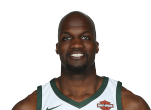
Scouting report
+ Utterly useless on offense. Poor hands, poor touch, poor ball skills.
+ Inadequate rebounder for his size.
+ Strong natural shot-blocker. Understands his role on defense.
Analysis
After a season split between Miami and Boston and in which he had just 28 total points and 38 rebounds in 33 games, Anthony is holding onto a spot in the NBA by a thread. He was a reasonably effective role player in the Heat's system when his sole job was to protect the rim on defense with his above-average shot-blocking skills. But devoid of All-Star talent around him, and with age starting to take a toll, Anthony is struggling to find a calling card.
Even in the best of times, Anthony was a poor scorer and rebounder. He has averaged just 5.2 points and 6.8 rebounds per 36 minutes for his career, which leaves him to serve primarily as a screener on that end. Perhaps a contender with a strong offense and a need for shot-blocking will take a chance on Anthony, but he is a poor fit in the Celtics' rebuilding plans.
VITOR FAVERANI, PF/C
| Pelton's 2014-15 Projections | ||||
| Player card » | ||||

Scouting report
+ Solid interior defender. Blocks and alters shots around the rim.
+ Uncomfortable with the ball. Turnover-prone.
+ Not a scorer in the post. Most effective as an offensive rebounder.
Analysis
When Faverani posted 12 points, 18 rebounds and 6 blocks in his second career game this past Nov. 1, it appeared the Celtics might have unearthed a gem in the Brazilian big man. Instead, that proved to be the highlight of a season that included time in the D-League and a knee injury in March that cut his first year short.
But Faverani offers some serviceable skills on the defensive end that, with time and experience, could help the squad. He blocked 2.0 shots per 36 minutes and held opponents to 45.3 percent shooting at the rim, which could create hope he will provide solid rim protection for a team that desperately needs some.
Faverani's offensive game needs much more work. He ranked in just the ninth percentile in the NBA in post-up offense (.545 points per play), has no midrange game to speak of (just 21 attempts from 8 feet out to the arc) and inexplicably launched 40 3's, of which he made just 12. For Faverani to help the Celtics — or any team, for that matter — he must come to understand his own game better, which, on offense, means getting out the way.
PHIL PRESSEY, PG
| Pelton's 2014-15 Projections | ||||
| Player card » | ||||

Scouting report
+ Racks up assists … and turnovers to match.
+ Uncomfortable as a perimeter shooter. Takes lots of 3's. Makes few of them.
+ Forces steals with quick hands but struggles to defend when isolated.
Analysis
Synergy was not impressed with Phil Pressey's rookie season. At all. The point guard graded out in the fourth percentile of all players on offense and produced just .587 points per play. Running the pick-and-roll? Third percentile. Transition? Fifth percentile. Isolation? Thirteenth percentile. You get the drill. Pressey's offensive rating of 89 was abysmally low, especially for a player who started 11 games and was a regular part of the rotation.
When Pressey is playing well, he can penetrate and find teammates. Some Celtics fans might have been fooled by his finish to the season, as he posted double-figure assists in four of Boston's final six games. But he also turned the ball over at least four times in three of those games and made just 29.4 percent of his 3-pointers, which were season-long problems. Simply put, to become an effective backup, he must turn himself into a reliable jump shooter and be more careful with the ball. This season, though, he might not get the opportunity to show much improvement — not with Marcus Smart aboard and Rajon Rondo healthy. But that might not be a bad thing for Pressey. As the past season showed, he's not yet ready for regular minutes.
JAMES YOUNG, SG
| Pelton's 2014-15 Projections | ||||
| Player card » | ||||

Scouting report
+ Talented offensive player with good range and leaping ability.
+ Next unselfish play will be his first. Little passing skill.
+ Inconsistency and questions about team play hurt his draft stock.
Analysis
There is little question James Young has a set of skills that could make him an effective offensive player for a long time. But there are serious questions about whether he'll ever maximize those abilities. Young slipped to 17th in the draft in part because in his one season at Kentucky, he showed a serious unwillingness to pass the ball and preferred to launch contested jumpers.
Because of his 6-foot-7 size, outstanding leaping ability and quick release, Young can get off a jump shot virtually any time he wants. The lefty has yet to learn contested shots are not nearly as valuable as open ones, though. According to Draft Express, nearly three-quarters of his catch-and-shoot jumpers were contested. That dragged down his shooting percentage to 34.9 percent from 3-point range.
Young is limited off the bounce by his inability to drive right. He also tends to lose focus on defense, which left John Calipari frustrated on more than one occasion. Still, given Young's ability to finish above the rim and his smooth stroke from deep, the 19-year-old has a high ceiling, provided he can learn proper shot selection.
EVAN TURNER, SG
| Pelton's 2014-15 Projections | ||||
| Player card » | ||||

Scouting report
+ Excellent passer and rebounder for a wing.
+ No jump shot. Poor range inhibits his overall offensive game.
+ Struggles defensively, largely due to lack of elite athleticism.
Analysis
Poor Evan Turner. After the Pacers acquired him after the trade deadline, he became the scapegoat for their problems, which saw them lose 13 of their final 23 games, then struggle to get by both Atlanta and Washington in the playoffs. By the time the Pacers met the Heat in the Eastern Conference finals, Turner couldn't get off the bench, and that left a lasting impression on the league as he hit the free agent market this summer. Eventually, he went to the Celtics for a portion of their mid-level exemption.
Turner's problems are well-documented. He is a dreadful perimeter shooter, particularly from 3-point range, which limits his effectiveness on the wing. Turner is best with the ball in his hands — he has averaged 3.9 assists per 36 minutes for his career — and has always been a strong rebounder (6.5 career boards per 36 minutes). But a lack of quickness keeps him from getting to preferred spots on the floor, and he has never posted an offensive rating greater than 99, a damning assessment of his efficiency, especially given his high usage rates in Philadelphia.
That subpar athleticism hurts Turner on defense as well. He consistently ranked among the bottom half of defenders during his three-plus years with the 76ers, struggling to contain his man both on and off the ball. He'll have a chance to change his reputation with the Celtics, but considering the team's fairly crowded perimeter and commitment to younger players, he could face a struggle simply trying to earn consistent playing time.
DWIGHT POWELL, PF
| Pelton's 2014-15 Projections | ||||
| Player card » | ||||

Scouting report
+ Athletic, versatile Canadian forward.
+ Served as point forward in Stanford triangle. Some range on jumper.
+ Capable shot blocker. May be able to defend either forward position.
Analysis
After a solid four-year career at Stanford, Dwight Powell was taken by the Charlotte Hornets in the second round of the 2014 NBA Draft and dealt to the Cleveland Cavaliers. Alas, the all-Canadian frontline of Powell, Andrew Wiggins and Anthony Bennett never materialized in Cleveland. Powell was traded again to the Boston Celtics, which means he must fight for a roster spot as the Celtics have 16 guaranteed contracts and 15 roster spots. Powell's salary is not guaranteed beyond this season, per BasketballInsiders.com.
An interior player in college, Powell has been playing the wing at times during the preseason. He's got the athleticism to defend small forwards, and more than enough size to defend power forwards (he measured 6-11 at the NBA Draft Combine) but not enough bulk to match up with centers. Powell is also very skilled. He led the Cardinal in assists, playing a point forward role in the triangle offense Johnny Dawkins installed last season. But if Powell is going to make the move to the wing, he'll have to improve his outside shooting. He was 33-of-114 (28.9 percent) career from the college line.
*********************************
New York Knicks: 2014-15 roster
Here are our player scouting reports and 2013-14 projections for the New York Knicks. (Note: Kevin Pelton's stat projections are for players expected to play 250 or more minutes in '13-14.)
PROJECTED STARTERS
JOSE CALDERON, PG
| Pelton's 2014-15 Projections | ||||
| Player card » | ||||
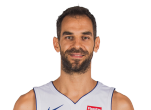
Scouting report
+ Steady hand at the point who rarely forces plays or shots
+ Top quality shooter, particularly in spot-up situations
+ Liability on defense at the point of attack
Analysis
Calderon represents both a massive upgrade at point guard and a hole the Knicks must eventually fill. How? Well, Calderon remains a remarkably efficient offensive player, and the contrast between his play at the point and that of his predecessor — Raymond Felton — is roughly the same as moving to a beachfront home in Maui after spending a year living in the desert. At the same time, his defense is capable of making even Felton look good.
But let's go back to the positive aspects of acquiring Calderon. For years, he has been a masterful floor general, sporting a career 4.09 A/TO ratio and 119 ORtg (per Basketball Reference's formula). He has also become an increasingly deadly shooter. Two seasons ago, Calderon just missed joining the prestigious 50-40-90 club by shooting 49.1 percent from the field, 46.1 percent from 3-point range and 90 percent from the line. Last season, he hit 44.9 percent of his 3s and ranked as the NBA's best spot-up shooter among those who played at least 600 minutes (according to Synergy) by averaging 1.373 points per play. But he is also terrific with the ball in his hands and is particularly nifty when running the pick-and-roll. It's no wonder why his teammates have always loved playing with him.
But Calderon just can't hold his own defensively, especially at age 33. He struggles to keep up with quicker point guards and isn't big enough to handle shooting guards, especially since Synergy shows that he has significant trouble closing out on spot-up shooters or chasing his man off screens. A strong overall team defensive scheme can compensate for some of his failings, but the Knicks don't have that luxury. As a result, even as Calderon likely pairs well with Carmelo Anthony and reinvigorates the team's offense, the Knicks will need to remain active in finding a younger, two-way option at the point.
IMAN SHUMPERT, SG
| Pelton's 2014-15 Projections | ||||
| Player card » | ||||

Scouting report
+ Good quickness and length for a guard make him an effective defender
+ Not a confident shooter; poor finisher at the rim
+ Good handle and playmaking ability for an off-guard, not enough to run the point
Analysis
What's it going to be for Iman Shumpert? Is he the rookie defensive dynamo with emerging offensive skills? Or the third-year bricklayer burdened by trade rumors?
As one of the Knicks' few sources of young talent in recent years, Shumpert has faced heavy expectations since a 2011-12 season in which he earned All-Rookie First Team honors. Although the Knicks realized early in that initial season that Shumpert wasn't suited to be a point guard, he fit in naturally on the wing, particularly as a tenacious defender. But by last season, he was hitting only 37.8 percent of his shots, and optimism was fading.
Even Shumpert's defense suffered last season. Although he forced 1.7 steals per 36 minutes, he ranked in just the 41st percentile on Synergy, allowing .889 points per play. But if there's one thing that could help Shumpert restore his shine, it's Phil Jackson's system (as run by Derek Fisher). Jackson always preferred big guards in the triangle offense, and while Shumpert isn't a pure point guard, he can handle the ball well enough to initiate sets. Clearly, Shumpert must improve his jump shot, but he did hit 40.2 percent of his 3-pointers two seasons ago, so he has ability. The time is now, though, for Shumpert to stay healthy and deliver on his promise, or else he'll find himself in a new uniform before long.
CARMELO ANTHONY, SF
| Pelton's 2014-15 Projections | ||||
| Player card » | ||||

Scouting report
+ Premier scorer with range, skill and strength around the hoop
+ Excellent defensive rebounder when engaged
+ Questionable court vision and passing ability; does not create for others
Analysis
Carmelo Anthony is a human Rorschach test. Some watch him play and see a gifted scorer with a mix of power, grace and shooting ability. Others observe those same plays and detect an air of selfishness and an inability to utilize his vast array of skills to enhance his teammates' abilities.
The truth is probably somewhere in the middle. For a high-usage player, Melo was actually quite efficient last season. According to Basketball Reference, 27 players since 2002-03 have used at least 32 percent of their team's possessions (Melo was at 32.4 last season). Of that group, Anthony had the 11th-best offensive rating (113), topping multiple seasons from Kobe Bryant and almost identically matching Derrick Rose's 2010-11 MVP campaign. But there is still the question of whether allowing Anthony to take on such a central role is best for his team.
Last season, for instance, SportVu's player tracking system identified that Anthony produced only 6.2 assist opportunities per game. That was 94th in the league, and not only miles behind the likes of LeBron James (12.0) and Kevin Durant (10.3), but below a host of lesser wings such as DeMar DeRozan (8.3) and Arron Afflalo (7.3). That means that it's not simply a matter of Melo firing up jumpers because of his teammates' misses. He isn't even giving them the opportunity to fail, and it remains to be seen whether his shot selection really is more efficient than, say, an open corner 3-pointer for Tim Hardaway Jr.
The rest of Anthony's game pales in comparison to his scoring ability, although he is an effective rebounder when he wants to be. Last season's 19.2 defensive rebound percentage was the best of his career, in fact. That's another argument in favor of playing Melo exclusively at power forward, which provides the Knicks with better spacing on offense and allows them to hide him more on defense. According to Synergy, in fact, he excelled guarding post-ups last season, allowing just .59 points per play (95th percentile). By contrast, he struggled to stick with spot-up shooters on the perimeter (1.02 PPP, 38th percentile).
Regardless, the Knicks are all-in on Anthony's future, having brought him back for five years and $124 million. It is now up to Phil Jackson and Derek Fisher to maximize Anthony's abilities.
ANDREA BARGNANI, PF
| Pelton's 2014-15 Projections | ||||
| Player card » | ||||
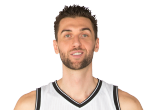
Scouting report
+ Perimeter-oriented big man who takes lots of 3-pointers, makes few of them
+ Decent shot-blocker due to his length, timing and agility
+ Rebounds like a guard, despite 7-foot frame
Analysis
Had Andrea Bargnani not once been the No. 1 pick in the draft, were he not earning $11.5 million this season, if he were playing in a system conducive to his skill set, he would be a useful player. But that's not the world in which we live. Instead, Bargnani has carved out a rep as a 7-footer who prefers to launch 3-pointers — inaccurately — and contributes next to nothing near the hoop. That leaves him without a clear position, which is an even bigger problem on the Knicks, a team that already struggles to figure out how to deploy Carmelo Anthony and Amar'e Stoudemire.
Bargnani has a rep as a floor-stretching big man, but his numbers don't match that perception. Last season he made just 27.8 percent of his 3s, his third consecutive season below 31 percent. According to Synergy, he averaged just .895 points per play as a spot-up shooter, ranking him in the NBA's 41st percentile. Then again, he was even worse in the post (.695 PPP, 22nd).
Yet Bargnani's offensive impact dwarfs his defensive ability. He is a brutal pick-and-roll defender (.88 PPP, 32nd), which should be a strength for a player purported to have solid footwork. And he is contact-averse, resulting in a 15.2 percent defensive rebound rate. Despite those shortcomings, Bargnani has shown the ability to be a solid shot-blocker when engaged, and last season he averaged 1.2 BPG in 29.9 minutes a night.
Were Bargnani committed to truly becoming a skilled big man, one capable of knocking down a reasonable rate from deep, passing effectively from the high post and driving past slower defenders, he could be a strong fit in the triangle offense. But he is about to turn 29, so it's time to stop hoping that he'll change his stripes. Instead, his value to the Knicks might come around the trade deadline, when Phil Jackson could look to move Bargnani's expiring contract for a more productive player.
SAMUEL DALEMBERT, C
| Pelton's 2014-15 Projections | ||||
| Player card » | ||||

Scouting report
+ Long-armed shot-blocker, though not as effective as in his prime
+ Consistently inconsistent. Loses focus for stretches at both ends
+ Limited offensive threat, although he can finish on pick-and-roll
Analysis
In this era of renewed importance placed on rim protection, Dalembert still has a role, even as he enters the season at age 33 and with his sixth team in as many seasons. Dalembert blocked 1.2 shots per game in just 20.2 MPG last season, or 2.1 per 36 minutes, just slightly below his career average of 2.6. According to SportVU's player tracking cameras, opponents shot 52 percent when Dalembert was defending the rim, a decent mark, but not in line with the premier rim protectors. It's not a surprise that Dallas viewed Tyson Chandler as a significant upgrade.
Still, Dalembert becomes the Knicks' best interior defender, almost by default. When he plays with energy, he can be an effective rebounder at both ends as well — last season his 12.1 boards per 36 minutes bested his career mark of 11.6. But Dalembert's energy is not always a nightly constant, nor is his defense outside of shot-blocking. Offenses can exploit him in pick-and-roll situations, and he struggled — surprisingly — guarding post-ups last season, allowing .893 points per possession, per Synergy, which ranked him in the 43rd percentile.
Most of Dalembert's offensive contributions these days come on the boards. He did average 1.1 PPP as the pick-and-roll man last season, but he is almost never utilized as a post-up option and is not a confident passer or ball-handler. Dalembert remains an adequate option for about 20-25 minutes a night, until the end of the season, when his team realizes it can and should upgrade in the middle.
RESERVES
J.R. SMITH, SG
| Pelton's 2014-15 Projections | ||||
| Player card » | ||||
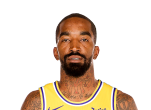
Scouting report
+ Ultimate streak scorer; no conscience in shot selection
+ Has zero interest in defending
+ Somewhat underrated as a rebounder and passer, though not great in either area
Analysis
Years from now, scholars will study the career of J.R. Smith and, despite the advanced intelligence of their machines, will still be unable to figure him out. There is simply no way to explain a player who, within the same season, hit at least five 3-pointers in a game 11 times, shot 9-for-36 in a five-game stretch, got benched, and finished the year by scoring 22 PPG on 48.1 percent shooting over his final 10 games. And that's not even the full story.
Fact is, Smith has serious skills as a scorer, with deep range and great quickness off the bounce. But he struggles to understand a team concept or his own limitations. For instance, according to Synergy, he's a fantastic spot-up shooter (1.168 points per play) and below-average in isolation situations (.719). But he spotted up on 309 plays and isolated in 228 — numbers that are far too close to one another.
Smith also hurts his team defensively. He ranked in the NBA's 14th percentile on Synergy, and the Knicks were 3.1 points per 100 possessions better on D without him on the floor. But that's one of the flaws you live with if you employ Smith, knowing that his offense can win you a game on its own. Still, you wonder how long the Knicks' new regime will remain patient with Smith's me-first style, especially if they can find a taker for his services.
AMAR'E STOUDEMIRE, PF
| Pelton's 2014-15 Projections | ||||
| Player card » | ||||
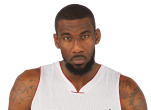
Scouting report
+ Knee injuries have curbed his effectiveness; can't play big minutes
+ Still finishes well at the rim, but free throw rate has declined
+ Poor defender in all respects, particularly on pick-and-roll
Analysis
It is a shame that we never got to see what Amar'e Stoudemire would have looked like with healthy knees over the course of a full career. And obviously, his current form is not worth anywhere close to the $23.4 million he will earn this season. But Stoudemire is not a lost cause, either: He can still be quite effective, albeit in a limited way.
Stoudemire can no longer play big minutes and needs a periodic game off to preserve his body. But Stoudemire's stats were still strong last season — 19.0 PPG and 7.9 RPG per 36 minutes. He also claimed he had more to give late in the season and backed it up: After moving into the starting lineup with 22 games left, he averaged 16.1 PPG and 6.2 RPG the rest of the way. That showed — again — that he can still be an effective offensive player, particularly on the pick-and-roll, where he ranked in the 91st percentile per Synergy.
Stoudemire, despite his declining hops, still finishes well at the rim, hitting 62.9 percent of his shots within 8 feet. He also hits a high percentage of 2-pointers, at least from the middle and left wing, his preferred spots. Never a good defender, the banged-up version of Stoudemire is even worse, although he holds his own against post-up plays. Clearly, Stoudemire still has something to give as a bench scorer, and it's easy to imagine his playing a valuable role in that regard for a winning team after his contract expires next summer.
TIM HARDAWAY JR., SG
| Pelton's 2014-15 Projections | ||||
| Player card » | ||||
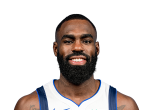
Scouting report
+ Excellent spot-up shooter with deep range
+ Has good positional size and physical tools; potential to be a solid defender
+ Must become a better playmaker; struggled on the boards as a rookie
Analysis
In an otherwise dismal season for the Knicks, Hardaway emerged as a bright spot, significantly outperforming expectations as a rookie. Despite a strong, three-year career at Michigan, Hardaway lasted until the 24th pick amidst concerns that he lacked elite athleticism and struggled to produce on a consistent basis.
However, Hardaway proved he was a capable player almost immediately with the Knicks. Playing in John Beilein's pro-style offense prepared him to excel working off the ball. His 6-foot-6 frame, solid mechanics and excellent elevation on his jump shot have made him an effective weakside shooter. He ended up knocking down 36.3 percent of his 3-pointers for the Knicks. Most of that work came as a spot-up shooter, and Synergy showed his proficiency in that area, ranking him in the NBA's 68th percentile at 1.029 points per play. That's especially impressive for a rookie, as most college stars are used to creating with the ball in their hands, rather than playing off others.
Hardaway does have skills with the ball that the Knicks would be wise to utilize, and which could make him a strong fit in the triangle. He played some point guard at Michigan, and he has a good handle and understands pacing. That showed itself last year on the pick-and-roll, where he produced .972 PPP (93rd percentile). But he ran only 72 PnRs over the entire season for the Knicks, which is somewhat inexcusable, given their struggles in the backcourt.
Largely because of the limited role in which Hardaway was deployed, his all-around numbers were lacking last season. He averaged less than an assist per game, 1.5 rebounds and only half a steal. He has to be better than that. But his track record at Michigan shows latent versatility. Now, Hardaway just needs the opportunity to show what else he can do.
PABLO PRIGIONI, PG
| Pelton's 2014-15 Projections | ||||
| Player card » | ||||
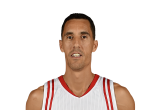
Scouting report
+ Clever passer who doesn't overdribble; moves the ball, then moves away
+ Infrequent shooter, but connects on a high percentage of 3-pointers
+ Tough, with good size at point of attack
Analysis
The veteran Argentinian guard (he turned 37 in May) has made a smooth late-career move to the NBA, performing admirably in two seasons with the Knicks. Prigioni is the antithesis of dynamic and hardly ever launches a shot outside of a wide-open 3-pointer, but the Knicks haven't needed much more out of their backup point guard.
Instead, Prigioni gets the team into its half-court offense, handles the ball well on the pick-and-roll (despite the fact he isn't a shooting threat) and has turned himself into a legit threat on those open 3s — he shot 46.4 percent from downtown last season. Prigioni has also earned a reputation as a defender who can frustrate opposing point guards, although the numbers don't support that contention: He has ranked in the bottom quarter of the league on D, according to Synergy, in both his NBA seasons. Prigioni gives Derek Fisher a veteran option off the bench, but it's hard to believe he'll hold off Father Time much longer — let alone Shane Larkin.
SHANE LARKIN, PG
| Pelton's 2014-15 Projections | ||||
| Player card » | ||||
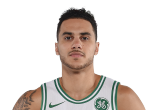
Scouting report
+ Small, quick point guard who is best working off the pick-and-roll
+ Struggled as a rookie due to injury and Mavericks' deep bench
+ Challenged defensively and as a finisher
Analysis
Larkin would probably like to press the reset button on his first NBA season. Although the Mavericks selected him in the first round of the 2013 draft, Larkin's development was stalled by a broken ankle during a summer-league practice. From there, he struggled to earn regular minutes on a roster flush with other point guards. It wasn't entirely surprising, then, that the Mavs were willing to part with him to obtain Tyson Chandler this summer.
The Knicks offer a far better opportunity, having long needed a young point guard, and minutes should be available behind Jose Calderon. Despite standing just 5-foot-11, Larkin was the 18th pick in the 2013 draft because of his acumen on the pick-and-roll. At Miami, he showed himself to be an excellent shooter off the dribble, an absolutely crucial skill for a small guard, particularly in the increasingly PnR-heavy NBA. Larkin has the quickness to get into the lane and set up his teammates when using ball-screens, but given his size, finishing should remain a problem. Perhaps due to his inconsistent role, Larkin didn't display his best skills in Dallas, ranking in just the 13th percentile as a PnR ballhandler (.545 points per play). Expect that production to improve with regular playing time.
That said, Larkin's size remains a major concern, particular in the triangle. Phil Jackson has always preferred big guards, so it is unclear how Larkin will fit into his (and Derek Fisher's) plans. Larkin was also abused defensively in limited action last season, a problem that figures to linger unless he magically sprouts a few inches. Still, adding Larkin was a savvy move by Jackson, and the point guard deserves a long look this season.
JASON SMITH, F/C
| Pelton's 2014-15 Projections | ||||
| Player card » | ||||
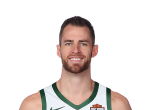
Scouting report
+ Good rebounder and shot-blocker with decent shooting range
+ Hardly ever gets to the free throw line and struggles to finish over length
+ Not effective guarding opposing post players
Analysis
The addition of Smith this summer was positively un-Knicks-like: Inexpensive, not risky and with solid upside. New York snatched up the 7-footer on a one-year deal for the $3.27 million taxpayer midlevel exemption, and he could prove to be a significant asset.
Smith played just 31 games for the Pelicans last season due to knee surgery, but started 27 of them and averaged 9.7 PPG, 5.8 RPG and 0.9 BPG. He was productive with playing time — during one four-game stretch, he averaged 36.9 MPG, and responded with 12.5 points and 12.8 boards a night.
Smith is 28, so this isn't a long-term move for the Knicks. But he is a solid interior defender with a good midrange jump shot on offense, although he struggles to finish at the rim. Expect Smith to challenge Samuel Dalembert for playing time in the middle.
CLEANTHONY EARLY, F
| Pelton's 2014-15 Projections | ||||
| Player card » | ||||

Scouting report
+ Versatile offensive player who scored in a variety of ways at Wichita State
+ Old for a rookie (23)
+ Good athlete who must improve perimeter skills to play small forward
Analysis
Anyone who watched Wichita State battle Kentucky in the NCAA tournament last March came away with the same impression: Kentucky had the elite NBA prospects, but Cleanthony Early was the best player on the court. That led to a rarity on draft night at Madison Square Garden — the Knicks were actually praised for a pick when they snagged Early in the second round.
Early brings diverse scoring ability to MSG. According to Synergy, he ranked in the 70th percentile or better in every key method of scoring — on spot-ups, in transition, posting up, coming off screens, isolating, setting ballscreens and off cuts. Still, there are concerns that, at 6-foot-7, Early may be something of a tweener — not big enough to handle the power forward spot, and not skilled enough to play the 3. Early must continue to develop his jump shot and ball-handling skills.
The good news is he is an athlete who recorded a 40-inch max vertical at the draft combine. Those physical tools, plus a strong work ethic, could help him become an effective defender in time. For now, he'll be able to develop slowly behind Carmelo Anthony while he rounds out a game that he seems to improve each season.
COLE ALDRICH, C
| Pelton's 2014-15 Projections | ||||
| Player card » | ||||

Scouting report
+ Solidly built center with decent mobility for his size
+ Lacks offensive polish or anything resembling a go-to post move
+ Can be an effective shot-blocker when given minutes
Analysis
The No. 11 pick in the 2010 draft out of Kansas, Aldrich was a bust from the start, and has done little to change that narrative in four seasons. It quickly became apparent that he would never be a scoring threat and would have to earn his keep on the glass and protect the paint.
Despite enough strength and athleticism to be effective, Aldrich has never earned enough trust from a coach to hold that sort of a role. Even on a Knicks team that sorely lacked rebounding and defense off the bench, he couldn't crack the rotation last season, although his numbers were encouraging in limited action. Aldrich posted a remarkable 32.5 percent defensive rebound rate, which was the highest of anyone who played in more than 40 games. And he blocked 3.3 shots per 36 minutes. The fact that those numbers still couldn't earn him regular playing time, though, shows the overall ineffectiveness of his game — and maybe a thing or two about Mike Woodson's rotation.
QUINCY ACY, F
| Pelton's 2014-15 Projections | ||||
| Player card » | ||||

Scouting report
+ Muscular forward best suited for rebounder/screener role
+ Non-shooter, but will launch an occasional 3-pointer, which he usually misses
+ Frequent fouler who is joining third team in four years
Analysis
The Knicks were far too soft last season, and that's why Acy has a chance to make the team. Although he is only 6-foot-7, Acy is a physical presence who is at his best when fighting for rebounds. He has averaged 8.9 boards per 36 minutes over his two-year career and is active on the offensive glass.
Acy has tried to adjust his game so that he can earn minutes at small forward, but has yet to show that he is skilled enough to play that position. He is not a passer, nor a ball-handler, and although he has tried to develop a spot-up jumper, it has yet to prove effective. He earns his living based on hustle and physical play, and that's what could endear him to Phil Jackson and Derek Fisher.
TRAVIS OUTLAW, SF
| Pelton's 2014-15 Projections | ||||
| Player card » | ||||

Scouting report
+ Mostly a jump shooter — decent from 3-point range, takes too many long 2s
+ Despite height, is not an effective rebounder or interior defender
Analysis
Because he is tall and can shoot reasonably well from long range, Outlaw continues to maintain an NBA job. But it's not clear if that ability can still help a team win games. Last season, the Kings were 3.9 points per 100 possessions worse with Outlaw on the floor (although they were slightly better on defense), in part because his contributions are null if he isn't hitting his 3-point attempts. Outlaw was a decent spot-up option, hitting 35 percent from deep, but shot only 42.6 percent from 2-point range and grabbed an offensive rebound about as often as "Mad Men" airs.
Outlaw's defense leaves plenty to be desired, too. He was once a solid shot-blocker, but no more, and his defensive rating was 110 — the fifth straight season it was that high, or worse. New York has plenty of non-defenders who shoot better than Outlaw, so don't expect this new addition to provide much value
*********************************
Brooklyn Nets: 2014-15 roster
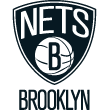
Here are our player scouting reports and 2014-15 projections for the Brooklyn Nets. (Note: Kevin Pelton's stat projections are for players expected to play 250 or more minutes in '14-15.)
PROJECTED STARTERS
DERON WILLIAMS, PG
| Pelton's 2014-15 Projections | ||||
| Player card » | ||||
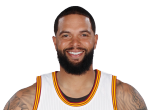
Scouting report
+ Great court vision, but mobility compromised by injuries.
+ Solid perimeter shooter. Can use strength to create space on defender.
+ Adept at running the pick-and-roll; also capable of playing off the ball.
Analysis
It's time to acknowledge the fact that has been staring at us for multiple seasons: Williams is no longer the player he once was. Ankle injuries have robbed him of significant stretches of time on the court, and when he has played, his quickness has been lacking. In May, Williams had surgery to remove a bone chip from his right ankle, and underwent a different procedure on his left ankle. Williams says he feels better than he has in years, but seeing will be believing for the Nets point guard.
Last season, Williams averaged just 14.3 PPG and 6.1 APG, his lowest numbers since his rookie season. He shot just 39.5 percent from the field in the playoffs, and at times the Nets looked more comfortable with Shaun Livingston running the offense. Historically a pick-and-roll maestro, he still produced .959 points per play in "derived offense," according to Synergy, which was in the NBA's 75th percentile. But Williams' dynamic combination of strength and speed was lacking.
A healthy Williams is skilled at attacking the basket by changing speeds and then finding teammates on the move. He averaged at least 10 assists per game for four straight seasons (2007-08 through 2010-11), but his stats have declined in that category in each of the past three years. An effective 3-point shooter, Williams actually adjusted quite well last season when coach Jason Kidd asked him to play off the ball, thriving in spot-up situations.
Williams held his own defensively last season, ranking in the 68th percentile in points per play and forcing 2.4 steals per 100 possessions — by far a career high. But for the Nets to challenge for a top-four seed in the Eastern Conference, they need the Williams of old — a dynamic, game-changing point guard capable of creating for himself or others. Perhaps his ankles will finally allow him to display those old skills. The Nets just can't count on that happening.
JOE JOHNSON, SG
| Pelton's 2014-15 Projections | ||||
| Player card » | ||||
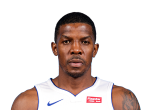
Scouting report
+ Bucket-getter who scores in a variety of ways. Excellent combo of size and skill.
+ No longer the playmaker or rebounder he was earlier in his career.
+ Brutal defender who struggles both on and off the ball.
Analysis
Mocked for a massive contract that paid him $21.5 million last season — and will earn him another $48 million over the next two — Johnson responded by becoming the veteran Nets' steadiest force. At age 32, he played in 79 games and increased his efficiency across the board, shooting 45.4 percent from the field and over 40 percent from 3-point range for the first time since 2004-05. Simply put, without Johnson's scoring, the Nets would not have been a playoff team.
Though the "Iso Joe" rep precedes him, the Nets used Johnson far more as a spot-up shooter and post-up scorer, and he excelled in both areas. Johnson ranked in Synergy's 92nd percentile on spot-ups, averaging 1.188 points per play and thriving in the corners, where he made 76 of his 170 3-point attempts (44.7 percent). In the post, Johnson was able to bully smaller wings with his 6-foot-7, 240-pound frame, although his go-to move remains a fadeaway jumper that leaves his free throw rate lower than it should be for a career 80 percent foul shooter.
While Johnson remains a legit scoring option, particularly late in games, his all-around game has deteriorated. In his prime, Johnson flashed point forward skills that routinely saw him average five-plus assists per game, and he did solid work on the boards. Last season, though, his assist rate dipped to 15 percent, his lowest mark since he was playing off Steve Nash's penetration in Phoenix, and he averaged just 3.8 RPG.
But defense was far and away Johnson's largest weakness. Synergy ranked him in just the 10th percentile as a defender, allowing .999 points per play. He was particularly bad guarding the ball handler in pick-and-roll situations, as he gave up .936 points per play (15th percentile).
As Johnson shifts into late-career mode, the Nets will have to figure out how to compensate for his defensive liabilities. His improved shooting percentages bode well for his ability to transition to a less central offensive role, though, which is critical with Brook Lopez returning to action.
BOJAN BOGDANOVIC, F
| Pelton's 2014-15 Projections | ||||
| Player card » | ||||

Scouting report
+ Solid 3-point shooter.
+ Expanded offensive repertoire. Can score in a variety of ways.
+ Could be challenged defensively as he adjusts to NBA.
Analysis
If Bogdanovic offers the Nets even a fraction of what he produced for Croatia at the FIBA Basketball World Cup this summer, then Brooklyn should have a nice new weapon on the perimeter this season. The 6-foot-7 swingman was Croatia's top player, averaging 21.2 PPG, hit 50 percent of his field goals and nailed 36 percent of his 3s. Now he'll look to make the transition to the NBA as a 25-year-old rookie.
Originally picked 31st in the 2011 draft, Bogdanovic elected to stay overseas, where he has expanded his game beyond simply knocking down 3-pointers. He spent the past three seasons with Fenerbahçe Ülker in Turkey, for whom he averaged 14.8 PPG in EuroLeague play in 2013-14. After signing a three-year, $10 million contract with the Nets in June, he'll compete for minutes at small forward right away, especially with Paul Pierce, Shaun Livingston and Marcus Thornton all on other rosters.
KEVIN GARNETT, PF
| Pelton's 2014-15 Projections | ||||
| Player card » | ||||
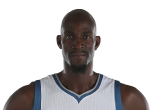
Scouting report
+ No longer an offensive threat; has lost significant mobility.
+ Still an effective defender because of his intelligence and communication.
+ Outstanding rebounder, even at age 38.
Analysis
The rumblings of retirement grew louder last May after the Nets fell to the Miami Heat in the playoffs, but ultimately Garnett opted to return. And why shouldn't he? Not only would he have been leaving $12 million on the table, but the Big Ticket can still play — albeit in limited minutes and without the all-around brilliance that defined his career.
KG is not much of a scorer anymore, operating primarily from the elbows and specializing in long 2-pointers off kickouts. Garnett rarely posts up these days, although he remains a solid facilitator, as evidenced by a 15.5 assist percentage last season.
But Garnett isn't on the floor for his offense. Synergy ranked him in the 89th percentile in overall defense (.76 points per possession), and he remains particularly effective against the pick-and-roll. In his age-37 season, he posted the highest defensive rebound rate of his career — an astonishing 31.4 percent — and still managed to block 1.3 shots per 36 minutes. Of course, those minutes shrank dramatically last season, all the way down to 20.5 per game, and new coach Lionel Hollins must manage them carefully in 2014-15. But KG, despite being a shell of his Hall of Fame self, can still contribute to a winning team.
BROOK LOPEZ, C
| Pelton's 2014-15 Projections | ||||
| Player card » | ||||
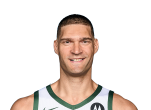
Scouting report
+ Skilled big man. Great touch around the hoop with range out to 20 feet.
+ Completely averse to rebounding. Struggles to stay healthy.
+ Size and timing make him an excellent shot-blocker.
Analysis
Everything was clicking for Lopez last December. Then he broke his foot against the 76ers, costing him the rest of his season. The 7-foot center missed 65 games, two seasons after a break in the same foot caused him to miss all but five games. Considering the history of centers and foot injuries (see: Walton, Bill and Ming, Yao), there is officially cause for concern that his career could be significantly shortened.
That would be a shame, because when healthy, Lopez is as skilled a center as you'll find in the NBA. At the time of his injury, Lopez was averaging 20.7 PPG on 56.3 percent shooting in just 31.4 minutes a night. His low-post skills are superb — he averaged 1.157 points per possession, according to Synergy, the best of any starting big man — and he's also a remarkable spot-up shooter (1.375 points per play, 99th percentile). Blessed with outstanding footwork and body control for his size, Lopez has little trouble creating quality shots and is adept at catching his defender off-balance to draw a trip to the foul line, where he hits close to 80 percent of his shots.
Defensively, Lopez is a top-notch rim protector. In his limited action last season, opponents shot just 39.7 percent against him at the rim, and he blocked 1.8 shots per game. Oddly, though, he remains an inept rebounder. He grabbed just 6.0 boards per game last season, and according to SportVU's player tracking data, he grabbed just 49.8 percent of rebounds that he had a chance to snag. For comparison's sake, Damian Lillard capitalized on 51.6 percent of his rebound opportunities.
Even if Lopez doesn't grab a single rebound, though, his half-court scoring and defense at the rim remain critical to the Nets' hopes this season. His foot must cooperate.
RESERVES
ANDREI KIRILENKO, SF
| Pelton's 2014-15 Projections | ||||
| Player card » | ||||
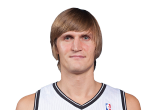
Scouting report
+ No longer the same defensive force as he was earlier in his career.
+ Limited offensive player; best suited as a stretch 4, but doesn't shoot well enough.
+ Battled injuries throughout the season; could be sign of aging.
Analysis
Either Kirilenko is poised for a massive bounce-back season, or he is done. The veteran forward's production dropped drastically last season as he battled a range of ailments, ranging from his back to his ankle. Even his signature defensive abilities suffered; he allowed .84 points per play to opponents, according to Synergy, which put him in the league's 30th percentile.
Considering that AK-47 went from 31.8 minutes a game in 2012-13 to just 19.0 last season, and that he appeared in only 45 games, it's easy to recognize his injury woes as the root cause of his decline. What's difficult to project, though, is whether he can return to health at age 33.
Kirilenko remains as unusual a player as you'll find in the NBA, one still capable of averaging more than a block and a steal per game, who makes hard cuts to the basket and finishes above the rim without ever having a play run for him. And two seasons ago, in Minnesota, he looked lively enough, averaging 12.4 points, 5.7 rebounds, 1.5 steals and 1.0 blocks per game. But those stats tumbled to 5.0/2.0/0.9/0.4 last season, and he became an even more reluctant shooter, attempting just 6.7 shots per 36 minutes.
With Paul Pierce in Washington, the Nets need a combo forward to step up, and a healthy Kirilenko would be a perfect fit. What the Nets don't know, though, is whether that player exists anymore.
MILES PLUMLEE, PF
| Pelton's 2014-15 Projections | ||||
| Player card » | ||||

Scouting report
+ Freak athlete. Plays above the rim and excels in transition.
+ Active rebounder with little scoring touch away from the basket.
+ Skilled passer and ball handler for his size.
Analysis
There's understanding your role, and then there's what Mason Plumlee did as a rookie. The 6-foot-11 Duke product, recognizing both his strengths and weaknesses, took all of 11 shots outside the paint. Eleven. Over the entire season. A perimeter-oriented big man when he arrived at Duke in 2009-10, the middle Plumlee brother has transformed his game over time to focus on his strengths — above-the-rim play around the basket — instead of launching ugly-looking jumpers.
The results proved largely positive for Plumlee. Despite starting only 22 games and averaging just 18.2 minutes, he emerged as the fuel for the aging Nets, earning All-Rookie first-team honors and posting a 19.1 PER in the process. A remarkable athlete, Plumlee was at his best running the floor in transition, routinely finishing with highlight-reel dunks. Plumlee also was active on the boards, averaging 8.7 rebounds per 36 minutes; expect that number to increase with experience. And while Plumlee did block 1.6 shots per 36 minutes, opponents shot 54.2 percent against him at the rim. In other words, he needs to keep improving as a rim protector.
Still, Plumlee's understanding of his own game helped him earn a spot on Team USA in September at the FIBA Basketball World Cup, where he played limited minutes but unquestionably will benefit from the experience. And his first-year efficiency remains a strong building block for the future — he finished in the 99th percentile on Synergy with 1.128 points per play, which is what happens when you live near the rim on offense. Expect Plumlee to show off more of his ball-handling and passing skills as he develops — both are above-average for his size — while continuing to play to his strengths. Given his understanding of the game and the potential that his supreme athleticism offers, it should be only a matter of time before he's starting at power forward for the Nets.
JARRETT JACK, PG
| Pelton's 2014-15 Projections | ||||
| Player card » | ||||
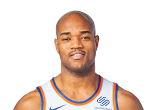
Scouting report
+ Veteran combo guard who excels in a bench role.
+ Solidly built floor leader, capable of playing on or off the ball.
+ Good midrange shooter with strong feel for pick-and-roll.
Analysis
A year after finding new life as a top-notch third guard, Jack attempted to fill a similar role in Cleveland. That experience didn't go nearly as well, and now Jack finds himself with his fifth team in as many seasons. The Nets hope to replicate more of the Jack-Curry dynamic than the Jack-Kyrie Irving experience, and there are plenty of reasons to believe Jack can excel playing in relief of — and alongside — Deron Williams.
Jack is a capable playmaker who understands how to run an offense. His strong build makes him particularly effective on the pick-and-roll, the one part of his game that didn't seem to suffer in Cleveland; he ranked in the 62nd percentile, according to Synergy, with .796 points per play on the PnR. That didn't quite match the .859/79th percentile numbers he put up the season before in Golden State, nor the .935/88th percentile performance he produced with New Orleans in 2011-12, but it remains a strength of his game. Jack is not a major 3-point threat, but he has hit 35.6 percent of his treys over his career, strong enough to punish opponents who go under a screen. Jack's preference, though, is to work in the midrange, a historically strong aspect of his game that suffered in Cleveland.
Jack's physical strength is his greatest asset on defense and allows him to cover shooting guards when he is paired with another point guard. But he struggles to hang with quicker guards and is not much of a ball hawk — for his career, he averages just a steal per 36 minutes.
The Nets thrived when Williams played with Shaun Livingston last season. Now that Livingston has moved to Golden State to take on Jack's old role, it's only fitting that Jack will slide into the Brooklyn backcourt. Expect him to do what he does best — allow Williams to focus on scoring when he has the hot hand and keep the Nets humming when the oft-injured starter is out of the game.
ALAN ANDERSON, G/F
| Pelton's 2014-15 Projections | ||||
| Player card » | ||||
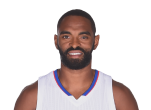
Scouting report
+ Tough-minded defender; compensates for lack of elite athleticism.
+ Floor-spacer on offense, but not a high-percentage one.
+ Excellent free throw shooter. Rarely gets to the line.
Analysis
That Anderson could start Game 7 of a playoff series speaks to the values of patience, perseverance and fit. Anderson spent four years plying his trade overseas from 2007-11, then returned to the NBA as a role player for Toronto. That role then expanded last season with the Nets, as his size on the perimeter fit in well with the team's small-ball approach.
Anderson functioned primarily as a spot-up shooter for the Nets, although his numbers weren't quite as efficient as the team would have liked. According to Synergy, he ranked in the 37th percentile in spot-up situations, scoring .874 points per play and shooting just 36.1 percent. He shot 3s well from the left corner (37 percent) but was dreadful from the right (21.7 percent), especially so considering his above-average stroke from above the break (37 percent). Despite those stats, when Jason Kidd felt the Nets needed more shooting to spread the floor against the Raptors, he replaced Shaun Livingston in the starting lineup with Anderson, and the Nets took both Games 6 and 7.
On defense, Anderson fights hard for position and did a surprisingly good job against the pick-and-roll, holding the other team to .759 points per play when he was guarding the ball handler, good for Synergy's 65th percentile. His overall D was nothing special, though — he posted just a 111 defensive rating on Basketball-Reference and forced just one steal per 36 minutes. Still, his bulldog mentality played well with the Nets' veteran core and should help him earn a similar role this season, especially if he can knock down a few more shots.
MIRZA TELETOVIC, PF
| Pelton's 2014-15 Projections | ||||
| Player card » | ||||
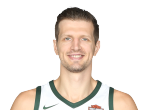
Scouting report
+ Deadly 3-point shooter from anywhere along the arc.
+ Competent defender in the post.
+ Limited offensive game beyond long-range shooting.
Analysis
Of all the ups and downs in the Nets' 2013-14 season, the development of Teletovic was a clear bright spot. The Bosnian grew into a competent stretch 4 off the bench, whose long-range shooting tipped more than one game in the Nets' favor.
Teletovic's only job, on most occasions, was to serve as a spot-up shooter, and he excelled in that role. According to Synergy, he averaged 1.109 points per play in spot-up situations, good enough to rank him in the NBA's 83rd percentile. The vast majority of those attempts came from 3-point range, and he connected on 39 percent of those treys, knocking down nearly two per game. Teletovic is not simply a corner specialist, either; he actually shot far more often above the break and hit 39.1 percent of those attempts.
Teletovic's touch makes him a decent option in pick-and-pop action. However, given the attention he draws behind the arc, driving lanes are consistently open, meaning he must finish stronger at the rim. Last season, he converted just 47.8 percent of his shots within 8 feet, which is unacceptable, particularly given his 6-foot-8 frame.
Defensively, Teletovic showed the ability to hold his own guarding post players, which is why he functions better at the 4 spot. He also moves his feet well enough to be reasonably effective in pick-and-roll coverage. Still, there's one reason for Teletovic to be on the court, and as long as he continues knocking down those 3-pointers, he'll play a key role for the Nets.
MARQUIS TEAGUE, PG
| Pelton's 2014-15 Projections | ||||
| Player card » | ||||
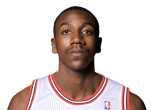
Scouting report
+ Outstanding speed; prefers to play in the open floor.
+ Questionable court sense. Has yet to demonstrate ability to set up teammates.
+ Unreliable shooter.
Analysis
It's been a tough adjustment to the NBA for the former first-round pick, as Teague has yet to crack a rotation in his two pro seasons. The former Kentucky guard moved from the Bulls to Brooklyn last season, but that did little to change his fortune, as his contributions were extremely limited (21 games, 9.6 MPG, 3.0 PPG, 1.4 APG).
Teague was best known for his speed and ability to push the pace in college but has yet to make the necessary adjustments in his game to succeed at the NBA level. His jump shot still needs work, as does his decision-making. And with a crowded Brooklyn backcourt and Teague's contract set to expire after the season, he is running out of chances to show that he deserves to stick in the league.
SERGEY KARASEV, SF
| Pelton's 2014-15 Projections | ||||
| Player card » | ||||

Scouting report
+ Long-range specialist with sweet lefty stroke.
+ Coach's son; excellent court vision.
+ Needs to add strength to make an impact on defense.
Analysis
Karasev played sparingly as a rookie with the Cavs after having been selected 19th in the 2013 draft. Then again, he turned only 20 just days before the opening of the season. Now he'll look to continue his development in Brooklyn after the Cavs traded him to the Nets to clear cap room that ended up going to LeBron James.
Karasev played in just 22 games with the Cavs last season and scored a total of 37 points; most of his work came in the D-League. There, the 6-foot-7 forward showed a quality touch from 3-point range, hitting more than two treys per game at a 41.6 percent clip. The lefty sets his feet well and has a quick release, which is why teams envisioned him as a capable floor-spacer before the 2013 draft, particularly after an impressive showing against the U.S. in the 2011 U-19 FIBA World Championship. A skilled passer, Karasev has the makings of an effective role player on offense for the Nets, but his defense must first improve enough for Lionel Hollins to trust him with consistent minutes.
JORGE GUTIERREZ, PG
| Pelton's 2014-15 Projections | ||||
| Player card » | ||||

Scouting report
+ Good athlete, lacks typical point guard skills.
+ Not a shooting threat.
+ Good rebounder for a point guard.
Analysis
Gutierrez keeps fighting, and each fight has earned him a better opportunity. He showed enough in the D-League last season to earn a 10-day contract with the Nets. He showed enough in those 10 days to stick with the Nets for the rest of the season and to earn a non-guaranteed deal for 2014-15.
Gutierrez is a point guard who does a little bit of everything — except shoot. He averaged 13.9 points, 6.9 assists and 5.7 rebounds per game with the D-League's Canton Charge last season, but launched just 24 3-pointers in 35 games. With the way the point guard position has evolved in the NBA, it's tough to have a non-shooter running the pick-and-roll, which limits Gutierrez's ceiling. Still, he is a good athlete and capable defender who averaged 1.5 steals per 36 minutes in limited action with the Nets. He'll compete with Marquis Teague for a spot at the end of the bench as Brooklyn's third point guard.
MARKEL BROWN, SG
| Pelton's 2014-15 Projections | ||||
| Player card » | ||||

Scouting report
+ Outstanding athlete with massive hops and lengthy wingspan.
+ Improved jump shot considerably over four-year college career.
+ Doesn't get to the rim enough. Needs to improve ballhandling and passing.
Analysis
The Nets acquired Brown's rights from Minnesota in the second round of the draft this past June, hoping that his skill level might catch up to his athletic ability. Blessed with obscene leaping ability — his max vert at the pre-draft combine measured 43.5 inches — as well as long arms and quick feet, Brown is a joy to watch in the open floor. But he is only 6-foot-3 and doesn't have the ballhandling or passing skills to play the point, which means he's going to have to develop into a knock-down shooter to stick in the NBA. Right now, he's not there, although he did transform his 3-point shooting from 26.2 percent as a freshman to 37.9 percent as a senior at Oklahoma State.
Given his ability to finish, you'd like to see Brown get to the rim more, but right now his handle doesn't allow for that kind of creativity. And despite his physical gifts, he will need to be a more active, engaged defender to earn minutes. Brown will be fighting an uphill battle to stick with the Nets; a stint in the D-League — where he could further refine his skills at both ends of the court — could serve him well.
******************************************
Toronto Raptors: 2014-15 roster
PROJECTED STARTERS
KYLE LOWRY, PG
| Pelton's 2014-15 Projections | ||||
| Player card » | ||||
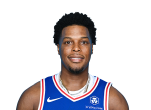
Scouting report
+ Fearless. Battles big guys for rebounds and attacks the rim.
+ Vastly improved shooter from deep; now demands hard closeouts on 3-pointers.
+ Creates well for others, particularly off the pick-and-roll.
Analysis
Believe it or not, last season was only the second time in eight years that Kyle Lowry started more than 52 games. After watching him perform at an All-Star level — he was an egregious snub — it's only logical to wonder what took so long.
Lowry fueled the Raptors' run to the Atlantic Division title, contributing in every way imaginable. Pick an advanced statistical measure and you'll see a compelling case for All-NBA honors. Win shares? Lowry ended up 11.7 — eighth in the NBA. Efficiency? Lowry posted a 118 offensive rating and a 106 defensive rating, according to Basketball Reference. Real Plus-Minus? His 4.25 mark was 21st in the league.
Lowry's game is built on toughness. He plays far bigger than his 6-foot, 205-pound frame. Last season he grabbed 4.7 rebounds per game and attacked the basket with reckless abandon at 6.5 drives per game.
His skill level has improved considerably over time, as well. He ran the pick-and-roll with aplomb last season, contributing .972 points per play in derived offense, which ranked in the NBA's 78th percentile, according to Synergy. Even more impressive, though, was his 94th percentile ranking in spot-up shooting, a testament to the work he has put into his jumper. Last season, he nailed 2.4 3-pointers per game at a 38.0 percent clip.
On defense, Lowry applies excellent ball pressure with his combination of strength and quickness, and he has forced roughly 1.45 steals per game for each of the past for seasons. Still, Synergy's tracking data shows that his game still needs work at that end: He allowed .888 points per play, placing him in the league's 42nd percentile.
TERRENCE ROSS, SG
| Pelton's 2014-15 Projections | ||||
| Player card » | ||||
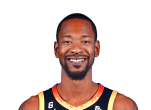
Scouting report
+ Great leaper; explosive in the open floor.
+ Improving shooter who must be respected beyond the arc.
+ Needs to be more consistent on defense.
Analysis
One of the strangest nights in recent NBA history occurred on Jan. 25, 2014. That's when Terrence Ross, a middling scorer in two NBA seasons, erupted for 51 points against the Clippers. He made 16 of 29 shots, nailed 10 3-pointers, knocked down 9 of 10 free throws and even grabbed nine boards for good measure. Then he didn't hit the 20-point mark again for another month.
Ross, the No. 8 pick in the 2012 draft made significant progress in his second year, moving into the starting lineup after Rudy Gay was traded to Sacramento and finishing the season with a 10.9 PPG scoring average. Ross is the rare player who could potentially win a slam dunk contest and a 3-point shootout. Ross connected on 2.0 3-pointers per game last season at a 39.5 percent clip. However, he struggled mightily in the playoffs, hitting just 16.7 percent of his 3s in the Raptors' seven-game loss to the Nets. Still, his established range should open up more opportunities to attack closeouts off the bounce, enabling Ross to use his athleticism around the rim.
Ross could become a much more valuable asset if he can transform his athleticism into more effective defense. Ross struggled greatly against pick-and-roll ball handlers last season, allowing .871 points per play, according to Synergy, placing him in the league's 28th percentile. He also is a poor rebounder, given his 6-foot-6 size and leaping ability, as he collected just 4.2 boards per 36 minutes.
DEMAR DEROZAN, SF
| Pelton's 2014-15 Projections | ||||
| Player card » | ||||
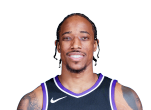
Scouting report
+ Outstanding athlete with a scorer's mentality.
+ Gets to the rim and aggressively draws contact.
+ Improved playmaker and perimeter shooter.
Analysis
Remember when DeRozan looked like just another lanky athlete who shot too much and would never be a starter on a winning team? My, how times have changed. DeRozan has improved and diversified his game each season, to the point where he earned his first All-Star selection last year and then contributed on Team USA's FIBA World Cup championship squad this summer.
Blessed with outstanding leaping ability, speed and a knack for scoring, DeRozan now can influence a game in multiple ways. He averaged 22.7 PPG for the Raptors, and although he shot just 42.9 percent from the field (the second-worst mark of his career), he attacked the basket relentlessly to earn eight free throw attempts per game. DeRozan embraced added responsibility after the Raptors dealt Rudy Gay to Sacramento in December, averaging 23.1 PPG, 4.5 RPG and 4.3 APG the rest of the way. He increased his scoring again in the playoffs to 23.9, although he shot just 38.5 percent.
DeRozan is a handful to stop off the dribble, as he combines his athletic gifts with a variety of moves and a fearless approach to attacking the rim. He averaged 7.2 drives per game, according to SportVU's player tracking data, the fifth-most for a non-point guard. And he showed an increased ability to set up teammates. He also is comfortable pulling up for a midrange J, ranking 16th in the league with 5.6 PPG on pullups, although he could stand to improve his 36.1 percent shooting on those plays. DeRozan also has significantly improved his defense, ranking as one of the best isolation defenders in the league last season (0.41 points allowed per play, according to Synergy).
DeRozan has slowly expanded his game beyond the arc, making 64 treys last season. He connected on just 30.5 percent of them, though, which doesn't justify his 210 attempts. Given that DeRozan still is just 25 years old and has a proven track record of improvement, it's a fair bet that he'll be able to increase that percentage this season.
AMIR JOHNSON, PF
| Pelton's 2014-15 Projections | ||||
| Player card » | ||||
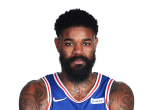
Scouting report
+ Outstanding help defender; strong and agile in the lane.
+ Finishes well around the hoop; struggles on the perimeter.
+ Good, not great rebounder; better on the offensive glass.
Analysis
It has taken a while for the former prep star, but Johnson finally has settled into a comfortable, effective role as a defensive-oriented forward. He actually took a small step backward in that regard last season. After a breakout 2012-13 campaign, his win shares dipped from 7.3 to 6.3, and his defensive grades on Synergy fell from .82 points allowed per possession (72nd percentile) to .876 (47th percentile). Still, his defensive rating, according to Basketball Reference, stayed steady at 104, a nod to the fact that his best quality is his help defense.
Johnson's block numbers were relatively pedestrian last season — 1.1 per game — but he still offers the Raptors outstanding rim protection. He held opponents to 47.9 percent shooting at the rim, according to SportVU's player tracking system, which actually topped Dwight Howard's 48.1 percent clip.
Johnson is effective on offense because he knows his limits. He is not a playmaker or a shooter, so he hangs around the rim, grabbing 4.1 offensive boards per 100 possessions and converting 56.2 percent of his field goals in 2013-14.
Starting next to the offensive-minded Jonas Valanciunas, though, Johnson's excellence in the "little things" helps create a strong pairing.
JONAS VALANCIUNAS, C
| Pelton's 2014-15 Projections | ||||
| Player card » | ||||

Scouting report
+ Good moves in the post; effective finisher.
+ Good defensive rebounder, but not a rim protector.
+ Not assertive enough; efficient player with low usage.
Analysis
The time is now for Jonas Valanciunas. He has the hands, the feet and the touch. Now he must develop the mentality to be a go-to post scorer. Last season, his second in the NBA, was supposed to be a breakout campaign for the Lithuanian center. Although he averaged 11.3 points and 8.8 rebounds per game, the Raptors would ignore him for large stretches of games. He was just ninth on the team in half-court touches, according to SportVU data, reflecting both a lack of willingness on the team's part to feed the post and his own discomfort in demanding the ball.
For the Raptors to seriously challenge the top teams in the East, that needs to change. Valanciunas may be just 22 years old, but he already is among the more skilled centers in the league. He ranked in the 71st percentile on Synergy in post-up scoring, creating .911 points per play. The Raptors would be wise to engage him in more pick-and-rolls, too, as he averaged 1.12 points per play as the roll man (79th percentile). Though Valanciunas is a poor spot-up shooter, he has the tools to become an adequate face-up scorer, as well. He just needs the ball around the basket more, especially considering his .531 field goal and .762 free throw percentages.
Defensively, Valanciunas is foul prone and has not emerged as a consistent shot blocker. He is at his best defending fellow bigs in the post, but his help D must continue to progress. Teams shot 51.4 percent against him at the rim, although he did an adequate job in pick-and-roll coverage, given his lack of experience.
Valanciunas plays with a pair of ball-dominant guards in Kyle Lowry and DeMar DeRozan, so it will take a significant emphasis from coach Dwane Casey to increase his center's usage.
RESERVES
LOU WILLIAMS, SG
| Pelton's 2014-15 Projections | ||||
| Player card » | ||||
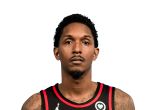
Scouting report
+ Strong scorer off the bench.
+ Defensive performance dipped last season coming off ACL surgery.
+ Shooting guard skills in a point guard's body.
Analysis
The Raptors ranked 28th in the NBA in bench scoring last season at a paltry 26.2 points per game, which is why they acquired Lou Williams in a trade with Atlanta this summer.
After ACL surgery in February 2013, Williams struggled to find his footing with the Hawks last season. His scoring average dipped to 10.4 points per game, his lowest since 2006-07.
A healthy Williams mixes solid 3-point shooting with aggressive drives to the hoop that earn him a fair number of trips to the line for a slight, 6-foot-2 guard. He comes off the bench with a scorer's mentality, although he has enough ballhandling and passing ability to function capably at the point in spurts. Thankfully, the Raptors won't have to ask him to fill that role, given the presence of Kyle Lowry and Greivis Vasquez.
GREIVIS VASQUEZ, PG
| Pelton's 2014-15 Projections | ||||
| Player card » | ||||
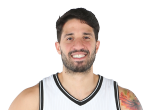
Scouting report
+ Big point guard with exceptional court vision.
+ Improved long-range shooter, but not a major scoring threat.
+ Lacks foot speed; compensates with good use of angles on offense and defense.
Analysis
Vasquez was a sneaky-good pickup for the Raptors as part of the Rudy Gay trade. After all, he was just a year removed from establishing himself as a legit starting point guard by posting 13.9 points and 9.0 assists per game with New Orleans. With Kyle Lowry already in the fold, Vasquez has slid into a bench role with Toronto.
Vasquez's passing has been his calling card since his days at Maryland. Last season, according to SportVU's player tracking data, he created 8.4 assist opportunities in just 22.7 minutes per game.
Vasquez has worked hard on his range, and the results showed last season. He hit 1.5 3-pointers per game at a 38.9 percent rate after joining the Raptors. Although he is not fleet of foot, Vasquez did a solid job defensively, particularly against the pick-and-roll, where his size can bother opposing point guards.
Vasquez should see plenty of minutes in Toronto this season, both backing up Lowry and playing alongside him.
JAMES JOHNSON, SF
| Pelton's 2014-15 Projections | ||||
| Player card » | ||||

Scouting report
+ Top-notch athlete with strength and skill.
+ Strong finisher at the rim, but drifts too far to the perimeter.
+ Has makings of a key role player, but lacks mentality.
Analysis
Stop us if you've heard this before, but if James Johnson would ever live up to his potential, he'd be an extremely effective player. Instead, he remains an enigma.
Start with his defense. During one stretch with the Grizzlies last season, he averaged 2.5 blocks in just 24.7 minutes per game. For the season, he averaged 3.2 blocks per 100 possessions and 2.3 steals. Yet Synergy graded him as a "poor" defender after he ranked in the 11th percentile by allowing .989 points per possession.
Offensively, you'll find more of the same. Johnson is strong and fluid and could thrive off cuts and offensive rebounds. Yet he insists on launching 3-pointers — and missing them. He attempted 3.3 treys per 36 minutes and connected on just 25.3 percent of them in 2013-14.
Johnson is 27 now, so banking on growth and potential is starting to become foolish. But he is back for his second stint in Toronto, the site of his best season, in 2011-12, when he started 40 games and averaged 9.1 points, 4.7 rebounds, 1.4 blocks and 1.1 steals.
LANDRY FIELDS, SF
| Pelton's 2014-15 Projections | ||||
| Player card » | ||||
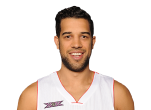
Scouting report
+ Raptors career plagued by injuries, inconsistency.
+ Once promising 3-point shooter is no longer a deep threat.
+ Strong rebounder for position. Can guard bigger wings effectively.
Analysis
It has been a rapid fall for Fields. He was one of the NBA's most pleasant surprises as a rookie in 2010-11, starting all but one game and showing a range of complementary skills, particularly as a tough-rebounding guard. But after two years in New York, he signed a three-year, $18.75 million contract with the Raptors, and his problems truly started.
Fields has appeared in just 81 games in two seasons for the Raptors, battling several injuries, including wrist and elbow problems. When he has played, he has hardly resembled the Knicks version of himself; after making 39.3 percent of his 3s as a rookie, he has hit 2 for 19 for Toronto. Even his prodigious defensive rebounding rate has declined from 18.9 in 2012-13 to 16.0 last season. It's no surprise that even when healthy he has found himself unable to earn minutes.
Now Fields enters the final year of his contract in an extended job audition. His best chance to impress will come on defense. The Raptors dusted him off in the playoffs to help contain Brooklyn's Joe Johnson, and in limited action last season, he posted a solid 105 defensive rating.
TYLER HANSBROUGH, PF
| Pelton's 2014-15 Projections | ||||
| Player card » | ||||
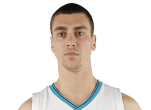
Scouting report
+ Offensive rebounding savant; physical and quick to react.
+ Underrated defensive player; moves his feet well.
+ Extremely limited offensive player with no range.
Analysis
A former lottery pick, it is abundantly clear that Hansbrough will never live up to that billing. Now he is fighting to simply remain a rotation player in the NBA, and the trends are pointing negatively on that front.
Hansbrough's fifth season was his least productive. He averaged just 4.9 points, 4.5 rebounds in 15.3 minutes per game and eventually ended up on the fringe of the team's rotation, given the emergence of Patrick Patterson off the bench.
Hansbrough's problem is that he is an undersized power forward who also has no floor-stretching ability. He has yet to make a 3-pointer in his career. And while he once was projected as a potentially effective midrange jump shooter, he has been below average in that area as a pro, forcing him to gradually phase out that aspect of his game.
Hansbrough's energy remains his best quality. He runs the floor well in transition and is an effective offensive rebounder. His 14.2 offensive rebounding rate last season was the best of his career. He has no shot-blocking skills of which to speak but moves his feet well defensively. He consistently has ranked as an above-average defender, according to Synergy's metrics, which helps him earn time on the court. Still, if Hansbrough wants to remain an important factor for the Raptors, it would behoove him to expand his offensive game.
PATRICK PATTERSON, PF
| Pelton's 2014-15 Projections | ||||
| Player card » | ||||
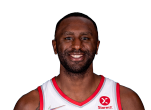
Scouting report
+ Strong, physical on the glass.
+ Vastly improved jump shooter.
+ Solid team defender. Doesn't block shots.
Analysis
Patterson's game continues to evolve from the post-oriented player who debuted as an undersized power forward for the Rockets in 2010-11. After joining the Raptors in the Rudy Gay trade, Patterson developed into a legitimate stretch 4, making a 3-pointer a game at a 41.1 percent rate. That productivity helped him become a key reserve for the Raptors, pushing past Tyler Hansbrough in the rotation.
Even as Patterson has expanded his game, he has retained his primary value: rebounding. Patterson averaged a solid 7.8 rebounds per 36 minutes last season and grabbed 62.2 percent of his rebound chances, according to SportVU. He also graded out as a solid positional defender on Synergy, despite limited skills in blocking shots or forcing steals, and finished with a 103 defensive rating in Toronto.
Patterson is not much of a threat off the pick-and-roll and has abandoned most of his low-post game in favor of his floor-stretching duties. That's a smart move, considering he is only an average finisher (59.2 percent at the rim). Most of the Raptors' other bigs are primarily low-post players, so Patterson should continue to carve out a meaningful role for himself if he hits his jumpers.
CHUCK HAYES, PF
| Pelton's 2014-15 Projections | ||||
| Player card » | ||||
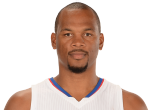
Scouting report
+ Model teammate, leader; sets an example with his hard work.
+ Strong interior defender; effectively moves taller players off the block.
+ Relentless on the boards, but can't score.
Analysis
Almost exclusively through hard work, Chuck Hayes has carved out a 10-year NBA career as a 6-foot-6 center. From his first day in the league, Hayes has intrinsically understood his role: battle on the boards, set hard screens and defend opposing post players. Although his minutes have declined, those skills and his attitude have made him a worthy reserve.
After joining the Raptors in the Rudy Gay trade, Hayes posted some of the least productive numbers of his career. Yet Dwayne Casey still trusted Hayes in the playoffs, playing the veteran in five of seven games against the Nets. The undersized center remains a strong option against post-up scorers, despite his height disadvantage. Last season, he ranked in the 76th percentile on Synergy by giving up just .767 points per play against post-ups, consistent with his performance for much of his career. That and his 23.2 percent rebounding rate make him effective in spot duty, provided the Raptors have scorers at the other positions.
LUCAS NOGUEIRA, C
| Pelton's 2014-15 Projections | ||||
| Player card » | ||||

Scouting report
+ Raw center who needs to add strength.
+ Potential to develop into a strong shot blocker.
+ Runs the floor well.
Analysis
Nogueira owns the distinction of having been the property of four teams before ever playing an NBA game. The Celtics drafted him with the 16th pick in 2013 draft, immediately sent him to Dallas for Kelly Olynyk, who shipped him to Atlanta in a deal that included Shane Larkin's draft rights. Nogueira then spent last season playing in Spain before watching his rights get dealt again, this time to the Raptors.
The raw 7-footer should finally make his debut this season, but realistically Nogueira will spend the bulk of his rookie year watching from the bench. He averaged just 6.2 points per game in Spain last season and struggled to make much of an impact with the Raptors' summer league team, posting just 5.0 points and 5.8 rebounds per game.
Down the road, though, the hope is that Nogueira will use his 7-foot-6 wingspan to become a strong rim protector. His offense remains several years away from being serviceable, but at 22 the Raptors can afford to be patient.
JORDAN HAMILTON, SF
| Pelton's 2014-15 Projections | ||||
| Player card » | ||||

Scouting report
+ No conscience. Comes off the bench ready to shoot.
+ Lacks the ball-handling ability and footwork to get to the rim off the bounce.
+ Good range on his jump shot; effective corner 3-point shooter.
Analysis
The Nuggets finally gave up on former first-round pick Hamilton last season, sending him to Houston in exchange for Aaron Brooks. Hamilton didn't fare much better with the Rockets, and now finds himself on his third team in a calendar year, still hoping to find an NBA rotation spot.
If he is to succeed, it will be as a volume scorer off the bench. Never hesitant to let it fly, Hamilton has launched 14.8 shots per 36 minutes over the course of his career but only has connected on 40.6 percent of them. A large portion of those attempts are 3-pointers (6.8 attempts per 36 minutes), and he knocks those down at a reasonable 35.8 percent clip. Given his size on the wing, that would suggest some potential as a 3-and-D player. But first he has to show that he actually can stop opposing wings. He did a decent job in Denver last season, allowing only .83 points per play, according to Synergy, but was atrocious in Houston (1.055).
Given Toronto's deep stable of perimeter players, it's tough to imagine Hamilton getting much burn in 2014-15.
BRUNO CABOCLO, SF
| Pelton's 2014-15 Projections | ||||
| Player card » | ||||
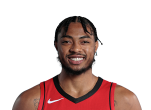
Scouting report
+ Raw, young talent who needs time to develop.
+ Massive wingspan, with hops and speed to match.
+ Has physical gifts to be an impact defender in time.
Analysis
When Masai Ujiri snagged Caboclo with the 20th overall pick, Fran Fraschilla famously declared that the Brazilian forward was "two years away from being two years away," and Raptors fans took to Google to find out anything they could about the draft's mystery man. But after Caboclo impressed observers in summer league action, it appears Ujiri might have known what he was doing after all.
Freakishly long — his wingspan is 7-foot-7 — with excellent speed and leaping ability, Caboclo just turned 19 in September. That means the Raptors have plenty of time to allow him to grow into his body, but it also might not take as long as Fraschilla anticipated. He averaged 11.4 PPG in the Las Vegas Summer League and displayed enough shooting and ball-handling ability to foresee a day when his skill level will compliment his prodigious physical gifts. Caboclo will likely develop in the D-League this season, which is a wise choice on a team that hopes to repeat as Atlantic Division champs. With strong coaching and a consistent work ethic, Caboclo could be able to help the Raptors as early as next season.
GREG STIEMSMA, C
| Pelton's 2014-15 Projections | ||||
| Player card » | ||||
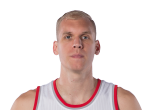
Scouting report
+ Has built NBA career on ability to block shots.
+ Small presence on offense. Will finish around rim and hit occasional midrange shot.
+ Immobile defender. Poor defensive rebounder.
Analysis
During his lone season in New Orleans, Greg Stiemsma started a career-high 20 games at center. Stiemsma parlayed his performance into a one-year guaranteed contract for the veteran's minimum with the Raptors. Stiemsma will serve as the team's fifth big man, allowing them to avoid rushing rookie Lucas Nogueira.
Stiemsma is in the NBA because of his shot blocking. While his block rate has fallen each of his three campaigns, Stiemsma remains solidly above league average. That overstates his value defensively. Stiemsma doesn't move well on the perimeter and is a below-average defensive rebounder. Stiemsma played a tiny role on offense for the Pelicans, using just 8.1 percent of the team's plays, lowest among any player who saw at least 1,000 minutes of action. The selectivity did help Stiemsma's efficiency; he shot a career-high 57.4 percent from the field. He does have some range on a set shot from the perimeter.
****************************
Philadelphia 76ers: 2014-15 roster

GO TO: PROJECTED STARTERS RESERVES
Here are our player scouting reports and 2014-15 projections for the Philadelphia 76ers. (Note: Kevin Pelton's stat projections are for players expected to play 250 or more minutes in '14-15.)
PROJECTED STARTERS
MICHAEL CARTER-WILLIAMS, PG
| Pelton's 2014-15 Projections | ||||
| Player card » | ||||

Scouting report
+ Rookie of the Year earned honor based on terrific start and large role.
+ Pass-first point guard forced to create for himself because of limited talent around him. Poor outside shooter.
+ Big frame for a point guard with long arms. Excellent rebounder from the perimeter.
Analysis
Michael Carter-Williams' Rookie of the Year campaign was the brightest spot in a dismal season in Philadelphia. Carter-Williams burst on the scene by threatening a quadruple-double (22 points, 12 assists, 9 steals, 7 rebounds) in his NBA debut, an unlikely win over the Miami Heat. He shot the 3 unexpectedly well early in the schedule before fading at midseason, then bounced back late in the year. His large role — Carter-Williams led all rookies in both minutes per game and usage rate — produced impressive averages that all but guaranteed him Rookie of the Year.
The Sixers drafted Carter-Williams as a pass-first point guard, but their dismal roster forced him into a leading role. The result was inefficient volume scoring. Carter-Williams was one of the league's most prolific bad outside shooters. His 26.4 percent 3-point shooting was the third-lowest mark ever by a player with at least 200 attempts, just behind Josh Smith's 2013-14 effort.
WORST 3-POINT SHOOTERS (MINIMUM 200 ATTEMPTS)
| Player | Team | Year | 3PM | 3PA | 3P% |
|---|---|---|---|---|---|
| Antoine Walker | BOS | 2000 | 73 | 285 | .256 |
| Josh Smith | DET | 2014 | 70 | 265 | .264 |
| Michael Carter-Williams | PHI | 2014 | 55 | 208 | .264 |
| Antoine Walker | DAL | 2004 | 82 | 305 | .269 |
| Jared Sullinger | BOS | 2014 | 56 | 208 | .269 |
| Mookie Blaylock | ATL | 1998 | 90 | 334 | .269 |
Carter-Williams was far more accurate a step inside the arc, making 37.4 percent of his 2-point attempts from beyond 16 feet, per Basketball-Reference.com. However, his effective field goal percentage on those shots was still worse than his 3-point shooting, and Carter-Williams took entirely too many long 2s. He's best on the drive, where his long strides and his ability to change direction allow him to get to the basket. Only an OK finisher as a rookie, Carter-Williams should improve in this regard because of his size — a big reason SCHOENE projects him to be far more efficient this season. Having a better dump-off option in Nerlens Noel will help. Carter-Williams sees the floor well, and his assist total should rise as his teammates improve.
Defensively, Carter-Williams' long frame is intriguing. It gives Philadelphia the benefit of putting size on opposing point guards — trendy in the league — without having to cross-match and use a smaller defender against wings. Carter-Williams was also an effective part of the Sixers' pressure D, ranking in the NBA's top 20 in steal rate, and only Russell Westbrook had a better rebound rate among point guards. Because of Carter-Williams' inexperience and tendency to gamble at times, the defensive results don't yet match the tools. Eventually, he could be a major weapon defensively.
HOLLIS THOMPSON, SG
| Pelton's 2014-15 Projections | ||||
| Player card » | ||||
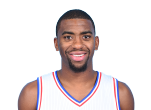
Scouting report
+ Started 41 games during first NBA season, emerging as Sixers' most reliable wing option post-trade deadline.
+ Legitimate 3-point threat, particularly from the corners. Otherwise invisible on offense.
+ Good size for a wing. Could become quality 3-and-D player. A bit overaggressive on defense.
Analysis
The Sixers' housecleaning meant opportunity for unproven players, and Hollis Thompson took full advantage, starting 41 games after making the team out of training camp. Philadelphia has Thompson signed for the minimum through 2016-17, enough time for the team to add talent to put him in an appropriate role.
Thompson's breakthrough was demonstrating that he can make the NBA 3-pointer. He shot 44 percent on 3s at Georgetown, but just 28.8 percent during his first pro campaign in the D-League. Last year, Thompson shot a cool 40.1 percent, best of any rookie with at least 100 attempts. He was especially dangerous from the corners, making the shorter 3 at a 47 percent clip, per NBA.com/Stats. And that was about the extent of his offense, along with occasional cuts. Thompson used just 11.3 percent of the Sixers' plays while on the floor, the team's lowest mark among regulars, and was assisted more than three-quarters of the time, per Basketball-Reference.com.
The next step for Thompson is to work on the D part of the 3-and-D role. At 6-foot-8, he has good size for a wing and the physical tools to be a plus defender. However, the Sixers allowed 3.2 more points per 100 possessions with Thompson on the floor.
LUC RICHARD MBAH A MOUTE, SF
| Pelton's 2014-15 Projections | ||||
| Player card » | ||||
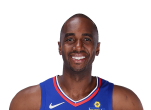
Scouting report
+ Defensive specialist who can match up with either forward position.
+ Hasn't been the same player since knee surgery in May 2012.
+ Not an offensive threat. Has never developed a 3-point shot.
Analysis
After five years with the Milwaukee Bucks, Luc Richard Mbah a Moute lasted nine games with the Sacramento Kings, which was too bad since it was appropriate for a prince (in his native village of Bia Messe, Cameroon) to play for the Kings. Wanting to get younger, Sacramento traded Mbah a Moute to Minnesota for Derrick Williams; the Timberwolves wanted to not have Derrick Williams. The Wolves also saved some salary for 2014-15 in the process, which was useful since Mbah a Moute played just 807 minutes for them after the trade.
A few years ago, Mbah a Moute was one of the league's best defensive specialists, capable of guarding high scorers at either forward spot and even some shooting guards. He had exceptionally quick feet for his size. That hasn't quite been the same since Mbah a Moute underwent arthroscopic knee surgery after the 2011-12 season. Since then, Mbah a Moute has slipped far below replacement level, and Minnesota actually defended slightly worse with him on the floor.
Mbah a Moute needs to be an ace defender because he contributes so little on offense. He hasn't developed the 3-point shot that would force defenses to respect him. Mbah a Moute has made just 24 career 3-pointers, including 4-of-17 last season (23.5 percent). Dwindling athleticism may also have manifested itself in Mbah a Moute's career-low 11.2 percent usage rate, one of the five lowest in the league among players with at least 1,000 minutes. As a result, Mbah a Moute racked up some DNP-CDs last season. He'll see more action in Philadelphia after being included in the Thaddeus Young trade, and has actually started at small forward during the preseason. Mbah a Moute's primary value to the Sixers will still be as a mentor to fellow Cameroonian Joel Embiid. Mbah a Moute actually discovered Embiid at a camp he runs.
NERLENS NOEL, PF
| Pelton's 2014-15 Projections | ||||
| Player card » | ||||

Scouting report
+ Über-athletic lottery pick set to make NBA debut after missing entire first season following ACL tear at Kentucky.
+ Defensive Player of the Year potential. Phenomenal shot-blocker who also has incredibly quick hands for a big man.
+ Developing offensive game. Will be most effective early on finishing around the rim.
Analysis
As the 2013 NBA draft class largely disappointed during its first pro season, Nerlens Noel watched and waited. The No. 6 overall pick, considered a possible No. 1 selection, sat out the full campaign as part of a conservative rehab program after tearing his ACL in February 2013. Fully healthy, Noel returned to the court during the NBA Summer League and flashed the potential that tantalized scouts during his brief college career. In five games between Orlando and Las Vegas, he averaged 18.7 points, 3.6 blocks and 2.5 steals per 36 minutes.
Noel is good enough to eventually be the NBA's best defender. He has incredible shot-blocking instincts and blocked shots at nearly an identical rate (13.2 percent) as his Kentucky predecessor, Anthony Davis (13.7 percent). Yet Noel's most intriguing defensive skill is an incredibly high steal rate for a big man. He is incredibly quick and has quick hands that allow him to poke balls free for steals. Noel is athletic enough to defend on the perimeter, which should allow him to eventually play with 2014 lottery pick Joel Embiid. The pairing might mitigate Noel's defensive shortcoming: He's only average on the defensive glass, in part because he's so aggressive contesting shots. He also could stand to talk better on defense to help his teammates.
At Kentucky, Noel was a bit player on offense. He had more freedom during the summer league and was aggressive trying to set up teammates from the high post — sometimes too aggressive, as he averaged 3.6 turnovers per 36 minutes. During his season off, Noel was able to hone his limited post repertoire and work on a midrange jumper, which will be important if he plays any power forward. Still, the strength of his offensive game is finishing around the basket. Much like Tyson Chandler, Noel can pose problems in the pick-and-roll game by rolling hard to the basket and making himself available for lobs.
HENRY SIMS, C
| Pelton's 2014-15 Projections | ||||
| Player card » | ||||

Scouting report
+ Mechanical post player enjoyed successful run as starter after deadline trade to Sixers.
+ Threat to score in the post. Accurate free throw shooting bolsters average 2-point percentage.
+ Good defensive instincts, though not a major shot-blocking presence. Surprisingly effective defending on perimeter.
Analysis
Having played just 173 career minutes at the time, Henry Sims looked like a throw-in as part of the trade that sent Spencer Hawes to Cleveland. Instead, Sims replaced Hawes as Philadelphia's starting center and was remarkably useful after the deadline. He looks like the Sixers' best find from the scrap heap last season and figures to carve out a role after Nerlens Noel's return, likely starting alongside Noel. The lone downside is that Sims is signed only to a minimum-salary contract through this season and will become a restricted free agent next summer.
A late bloomer at Georgetown, Sims emerged as a starter and post threat as a senior. His game is a bit mechanical, and he's frequently off balance, but he's capable of scoring in the post if allowed to play one-on-one. Sims also showed enough promise to be the high post part of "Sims City," as Philadelphia broadcaster Malik Rose described it. He has an accurate flat-footed jumper out to about 18 feet and showed the ability to pick out teammates as cutters. Sims isn't really a pick-and-roll threat because his thin frame makes him a poor screener and he doesn't catch the ball well on the move.
Though Sims is listed at 6-10, he measured that height without shoes at the NBA draft combine, giving him average height for a center. He still isn't much of a shot-blocking threat and instead depends on positioning around the basket. Despite not having much speed, Sims proved effective defending pick-and-rolls on the perimeter and even switching on guards at times.
RESERVES
JOEL EMBIID, C
| Pelton's 2014-15 Projections | ||||
| Player card » | ||||
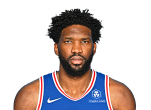
Scouting report
+ Freakishly gifted 7-footer who was likely the No. 1 overall pick before diagnosis of stress fracture in right foot. Likely to miss entire 2014-15 season.
+ Skilled post player with incredible feel for the game given how little high-level experience he has.
+ Major defensive potential thanks to size and athleticism. Needs to develop his help instincts.
Analysis
Within 12 months, Joel Embiid went from curiosity to the favorite to be taken No. 1 overall in the highly regarded 2014 NBA draft. During his abbreviated season at Kansas, Embiid flashed prodigious skills for a player who only took up the game in his native Cameroon at age 15. He drew lofty comparisons to fellow African 7-footer Hakeem Olajuwon. The tragic flaw was injury. Embiid missed the Jayhawks' final six games due to a stress fracture in his back, and during the draft process, doctors discovered a stress fracture in the navicular bone in his right foot. Surgery to place screws in the foot — and the ugly history of navicular fractures, which hampered the careers of players like Yao Ming and Bill Walton — caused Embiid to slide to the third pick, where the Sixers snapped him up. He could miss the entire season, following the same path as 2013 lottery pick Nerlens Noel.
Against college opposition, Embiid was a dominant post scorer, and he has the tools to be effective in the NBA. While the Olajuwon comparisons are unfair for any prospect, Embiid's footwork is remarkably polished given his inexperience. He presents a big target in the post and is capable of turning over either shoulder or facing up and hitting short jumpers with a soft touch. When opponents double, Embiid's ability to pass out of the post might be his best skill. According to Synergy Sports, Kansas scored 54 points on 39 plays where Embiid found a teammate from the post.
While Embiid's offense is ahead of his defense at this point, he has defensive potential as well. Start with his frame — a legit 7 feet, with a wingspan measured at 7-5 at the 2013 Nike Hoop Summit. That presents a major obstacle for opponents inside. Embiid's block rate ranked in the nation's top 20, per KenPom.com, and he can improve as he hones his instincts about offering help and getting in position earlier. A frontcourt of Embiid and Noel could be as intimidating defensively as any in NBA history. Like Noel, Embiid also moves well enough to comfortably defend pick-and-rolls on the perimeter.
TONY WROTEN, SG
| Pelton's 2014-15 Projections | ||||
| Player card » | ||||
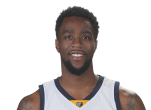
Scouting report
+ Gifted but erratic combo guard who got an opportunity to play through his mistakes in Philadelphia.
+ Loves highlight-reel passes, which often lead to turnovers. Made strides as a finisher. Abominable 3-point shooter.
+ Gambler defensively. Has a difficult time containing his opponent one-on-one.
Analysis
After playing sparingly as a rookie in Memphis, Tony Wroten was turned loose in Philadelphia, providing highs (he became the first NBA player since starts have been tracked to record a triple-double in his first start, an OT win over the Houston Rockets) and lows (he shot 21.3 percent from 3-point range). Wroten is the perfect kind of high-variance player for the Sixers; he has the potential to develop into a quality player someday (his top four SCHOENE comps include Monta Ellis and Larry Hughes) but he isn't yet good enough to play for a competitive team.
Wroten split his time between the two guard spots, backing up and playing alongside Michael Carter-Williams. It's unclear where Wroten will eventually land. Though he has excellent court vision and comes up with highlight-reel assists, Wroten's decision-making is too inconsistent to put the ball in his hands full time. At the same time, he shoots too poorly to play off the ball heavily. Wroten did Carter-Williams one better in poor volume 3-point shooting. Among players with at least 150 attempts, nobody has ever shot worse than Wroten's 21.3 percent.
WORST 3-POINT SHOOTERS (MINIMUM 150 ATTEMPTS)
| Player | Team | Year | 3PM | 3PA | 3P% |
|---|---|---|---|---|---|
| Tony Wroten | PHI | 2014 | 40 | 188 | .213 |
| Charles Barkley | PHI | 1989 | 35 | 162 | .216 |
| Mike Evans | DEN | 1986 | 39 | 176 | .222 |
| Jamaal Tinsley | IND | 2002 | 42 | 175 | .240 |
| Allen Leavell | HOU | 1983 | 42 | 175 | .240 |
Remarkably, Wroten did that despite hitting a pair of buzzer-beating 3s from beyond half court. Per Basketball-Reference.com, he actually shot better from beyond half court (28.6 percent) than from his team's side of the half-court line. On the plus side, Wroten made strides in finishing, a major problem for him since he tore his ACL in high school. He improved from 45.3 percent to 56.5 percent inside 3 feet, and since Wroten is so good at getting to the basket, those attempts accounted for more than half his shots.
Wroten's gambling style fit into the Sixers' defensive scheme. He posted a solid 2.1 percent steal rate and also contributed on the defensive glass. Though he's prone to lapses in concentration, Wroten does less damage defensively off the ball because he struggles to contain opponents and keep them in front of him one-on-one.
K.J. McDANIELS, SG
| Pelton's 2014-15 Projections | ||||
| Player card » | ||||

Scouting report
+ Physical wing with long arms and defensive potential. Outstanding shot-blocker from the wing.
+ Middling 3-point shooter in college. Showed promise in small NBA Summer League sample.
+ Subpar ball handler. Unlikely to create own shot.
Analysis
Considered a possible first-round pick after three years at Clemson, K.J. McDaniels dropped to the second round, where the 76ers made him the 32nd overall pick. The fit is a good one. With Philadelphia badly in need of wing help, McDaniels has a shot at starting this season and is the most likely second-round pick to contribute immediately. Aware of his leverage, McDaniels signed a one-year contract, giving him less security but the opportunity to become a restricted free agent next summer.
The key to McDaniels' NBA future is his ability to develop 3-point range. He shot 31.3 percent from beyond the arc in his Clemson career, though his development as a foul shooter (he made 84.2 percent of his free throws as a junior after just 65 percent his first two seasons) is encouraging. So too is McDaniels' 7-of-13 3-point shooting in the NBA Summer League. Despite the poor outside shooting, McDaniels still averaged 17.1 points per game as a junior, creating offense in a variety of ways. He excelled in the open court, shooting 68.7 percent on transition plays per Synergy Sports.
For now, McDaniels is more advanced at the defensive end. Though he measured just 6-4½ without shoes at the NBA draft combine, McDaniels is able to defend bigger opponents thanks to his strength and a 6-11¼ wingspan. That wingspan also helped McDaniels rank fourth in the ACC in block rate from the perimeter. He embraces the challenge of defending and was effective against Andrew Wiggins in a summer league showdown.
ARNETT MOULTRIE, PF
| Pelton's 2014-15 Projections | ||||
| Player card » | ||||

Scouting report
+ After a promising rookie season, he dropped out of the rotation in Year 2 and no longer appears to be part of the Sixers' plans.
+ Athletic, mistake-prone big man. Excellent finisher as a rookie. Major presence on the offensive glass.
+ Lacks defensive instincts. Subpar defensive rebounder.
Analysis
In a certain sense, Arnett Moultrie is responsible for the Sixers' rebuilding. If Doug Collins hadn't dealt a lottery-protected first-round pick to Miami for the draft pick (No. 27 overall) used on Moultrie in 2012, Sam Hinkie might not have been so aggressive in trying to avoid the playoffs and thus keep the pick. (If not conveyed this year, the pick converts to two second-rounders.)
At least Moultrie showed some promise as a rookie. Year 2 was a disaster. September ankle surgery sidelined Moultrie for the season's first half, and he complained to the Delaware County Times when he wasn't activated as quickly as he hoped. Moultrie's conditioning was an issue in Brett Brown's up-tempo offense, and he spent extended periods in the D-League and missed five games due to a violation of the NBA's anti-drug policy. (Five-game suspensions are given for a third positive test for marijuana.) Ultimately, Moultrie played just 187 minutes in 12 games during a lost campaign. However, he appears to have regained favor and has been Philadelphia's first big off the bench during the preseason.
When healthy, Moultrie was an effective finisher during his rookie campaign, making 58.2 percent of his shot attempts, largely at the rim. Moultrie was also among the league's best offensive rebounders in his limited action as a rookie, something that did not carry over in last season's small sample size. Moultrie is less effective on the defensive glass, in part because he's overly aggressive in trying to contest shots. His athleticism and size give him defensive potential that has as so far gone unused.
CHRIS JOHNSON, SF
| Pelton's 2014-15 Projections | ||||
| Player card » | ||||
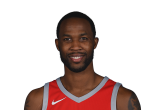
Scouting report
+ Athletic, skinny wing who put up good numbers in NCAA and D-League.
+ Volume 3-point shooter. Dangerous moving without the ball.
+ Active defender. High steal rate.
Analysis
Christapher Johnson, not to be confused with the skinny center who is in camp with the Miami Heat, is an athletic wing player who spent most of 2013-14 with the Boston Celtics. Johnson endeared himself to Brad Stevens with a scrappy style reminiscent of Stevens' Butler teams. However, the Celtics waived Johnson before training camp. The Sixers claimed his contract, which is non-guaranteed for the minimum through 2016-17, and Johnson could end up their starting shooting guard.
On offense, Johnson is looking to shoot the 3, which made him a perfect fit during his brief stint with Houston's D-League affiliate (the 3-happy Rio Grande Valley Vipers). From that time, Johnson learned to run to the 3-point line in transition, and he fired nearly six 3s per 36 minutes in the NBA. He made them at a below-average 33.9 percent clip, and slight improvement would make Johnson much more valuable. He's also dangerous off the ball as a cutter and can handle the ball and find teammates if need be.
Boston used Johnson to defend some point guards, a role he could also fill in Philadelphia. He's a bit slight for a wing defender, but has long arms and good size for a shooting guard, which poses trouble to point guards. Johnson had an excellent steal rate in college and should be effective in the Sixers' pressure defense.
JERAMI GRANT, SF
| Pelton's 2014-15 Projections | ||||
| Player card » | ||||

Scouting report
+ Undersized 4 in college expected to eventually move to the perimeter as a pro.
+ Complete non-shooter at Syracuse. Defenses don't have to respect him on the perimeter.
+ Good athlete. Must make adjustment from zone defense to man-to-man against bigger opponents.
Analysis
Against the advice of Syracuse coach Jim Boeheim, Jerami Grant — son of 11-year NBA veteran Harvey Grant — entered the draft after his sophomore season. Boeheim's concern appeared well-founded when Grant, expected to go late in the first round, instead dropped to the 39th overall pick because of concerns about his ability to transition to the perimeter as a pro. Grant may not have to worry about that in Philadelphia, where he could play as an undersized power forward (as Brandon Davies did last season).
After making six 3-pointers as a freshman, Grant did not make a single one (attempting just five) in 1,005 minutes of action as a sophomore. His free throw shooting (56.2 percent as a freshman, up to 67.4 percent as a sophomore) offers little hope Grant can develop into a credible perimeter threat. That makes it challenging to see how Grant will score in the half-court offense. He depended heavily on getting to the foul line at Syracuse, but NBA opponents will simply make him shoot over bigger defenders in the paint. In 11 NBA Summer League games in both Orlando and Las Vegas, Grant averaged just 12.9 points per 36 minutes, shooting 34.4 percent from the field.
To stick in the NBA, Grant will have to convert his athleticism into results at the defensive end. He's a classic Boeheim player — a rangy athlete who covers a lot of ground within a zone defense. It's tough to tell whether Grant's low steal rate was a product of the system; he averaged just 1.0 steals per 36 minutes in the NBA Summer League. The zone also allowed Grant to avoid defending the post, something he'll have to do against bigger NBA opponents.
ALEXEY SHVED, PG
| Pelton's 2014-15 Projections | ||||
| Player card » | ||||

Scouting report
+ Russian combo guard who has yet to translate his game to the NBA.
+ Sub-30 percent 3-point shooter during first two seasons.
+ Inattentive defender. Frustrates coaches.
Analysis
After playing 1,840 minutes as a rookie for a Timberwolves team beset by injuries, Alexey Shved saw his playing time cut by nearly two-thirds last season. Given how he played in limited opportunities, Shved might not even have deserved that. He again launched more than five 3-pointers per 36 minutes while making them at a sub-30 percent clip, and his 2-point percentage plummeted from a borderline 43.5 percent to an unacceptably poor 34.1 percent. Shved's .452 true shooting percentage was the second-lowest among players who played at least 500 minutes, and he had an above-average usage rate (20 percent or higher), ahead of only Anthony Bennett of the Cleveland Cavaliers (.425).
Shved isn't in the NBA for his defense — he's skinny and prone to mental lapses — and his ability to run the point at times wasn't useful on a Minnesota team flush with lead guards. So he was an easy throw-in for the Thaddeus Young trade. Shved's track record in Russia, both with CSKA Moscow and the national team, suggested he would be a useful NBA player. He'll have plenty of opportunity in Philadelphia and could emerge as the starter at shooting guard, so consider this the reverse ofNew York, New York. If Shved can't make it with the Sixers, he can't make it anywhere.
CASPER WARE, PG
| Pelton's 2014-15Projections | ||||
| Player card » | ||||

Scouting report
+ Extremely quick water-bug point guard.
+ Adequate outside shooter who has trouble scoring over bigger defenders in the paint. Decent playmaker.
+ Pressures the ball defensively, which leaves him vulnerable to fouls and getting beat off dribble.
Analysis
Casper Ware, the friendly point guard, played two years in Italy before making the leap to the NBA with the Sixers late last season. Ware is signed for the minimum through this season and will have a chance to make the roster in training camp as a third point guard. Squint hard and maybe he could fill the same role that Ish Smith has filled during his four-year (and counting) NBA career.
Listed at 5-10 and 175, Ware is one of the league's smallest players. His size works against him in the paint, where he struggled to finish over shot-blockers. Ware counters with a floater, but it's not a high-percentage shot, and based on his translated college stats he might not even be able to match last season's 42.9 percent shooting inside the arc. Ware is an OK 3-point shooter, though not good enough to boost his efficiency. A score-first point guard at Long Beach State, Ware is only average at setting up teammates.
Despite his size, Ware is more intriguing at the defensive end. He's extremely quick and likes to pressure opponents full court, taking time off the clock and causing an occasional turnover. Ware is less effective once the ball gets over half court, and tends to foul frequently for a point guard.
ELLIOT WILLIAMS, SG
| Pelton's 2014-15 Projections | ||||
| Player card » | ||||
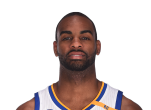
Scouting report
+ Enjoyed first full NBA season after three injury-plagued years in Portland, but did not play well.
+ Not an outside shooter and may have lost the athleticism that made him effective getting to the basket.
+ Defended both guard spots. Has nimble feet and is capable of pressuring the ball.
Analysis
While Elliot Williams' comeback didn't get as much attention as fellow former Blazer Greg Oden, it was heartwarming in its own right. Williams played just 24 games during three seasons in Portland, suffering a series of major injuries, including a dislocated patella and a ruptured Achilles tendon. Healthy in 2013-14, Williams played 67 games in Philadelphia.
Unfortunately, the athleticism that made Williams so promising may have been lost to the injuries and inactivity. During the one season he did get on the court for the Blazers, Williams made 61.7 percent of his 2-point attempts, many of them highlight dunks. His 2-point percentage dropped to 48.6 percent with the Sixers, and since Williams is not a good outside shooter (he's made precisely 29.6 percent of his 3s in both NBA seasons), he'll need to do better to be an efficient scorer and justify a spot in the rotation.
Philadelphia occasionally used Williams as the biggest guard in three-guard lineups. He's miscast in that role, as his slight frame makes him more effective defending smaller opponents. Williams had more success cross-matching against point guards and pressuring full court.
BRANDON DAVIES, SG
| Pelton's 2014-15 Projections | ||||
| Player card » | ||||
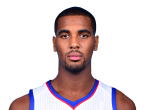
Scouting report
+ Tweener forward used as an undersized 4 by the Sixers.
+ Not a 3-point threat. Nonfactor offensively.
+ Active defensively. Poor rebounder for a post player.
Analysis
A power forward at BYU, undrafted Brandon Davies spent training camp playing on the wing for the L.A. Clippers before landing in Philadelphia and moving back to the post. He's not exactly a stretch 4, since he made just two 3-pointers last season and has a long, slow release. In fact, Davies shot just 9-of-40 (22.5 percent) from beyond 10 feet, per Basketball-Reference.com. That inability to shoot dooms any hopes of eventually converting to small forward, and makes Davies largely a nonfactor in the half-court offense.
Against bigger opponents, Davies' athleticism was a plus. His steal rate was excellent for a big man, and he can defend capably on the perimeter. When matched against a post-up threat, however, Davies' lack of size was problematic. He was also pushed around on the defensive glass, posting an average rebound rate for a small forward. Newly drafted Jerami Grant duplicates much of Davies' skill set, and despite having three more nonguaranteed seasons left on his contract, Davies may not be long for the Sixers or the NBA. However, he's been solid early in preseason play.
JASON RICHARDSON, SG
| Pelton's 2014-15 Projections | ||||
| Player card » | ||||
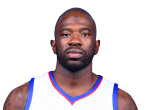
Scouting report
+ Veteran guard has not played since January 2013, having undergone unproven DeNovo surgery on troublesome left knee.
+ Before injury, had become increasingly reliant on 3-point shot with less success than in his prime.
+ At 33, still young enough to come back, but will never again be the athletic presence he once was.
Analysis
When Jason Richardson last played in an NBA game, Doug Collins was his coach and no current Sixers teammates saw any action. While the roster around Richardson has shifted seismically, he has been working back from DeNovo surgery on his left knee. Richardson opted for the procedure, in which juvenile donor cartilage is implanted to repair a defect, over more proven microfracture surgery. He was back on the court over the summer, though his role with a rebuilding Philadelphia team remains unclear. "I know he's focused on getting ready for camp," GM Sam Hinkie told reporters in August. "I don't know exactly how that will go. We'll see when he gets closer."
Entering the final season of a four-year, $24 million deal that is the Sixers' last collateral damage from the Andrew Bynum trade, Richardson hopes to prove to another team that he can still contribute. Having long since lost the athleticism that made him a Slam Dunk champion a decade ago, Richardson will need to return to the near-40 percent 3-point shooter he was from 2007-08 through 2010-11 rather than the more erratic outside shooter he was his last two healthy seasons. If he can do that and the knee holds up, there will be a place for Richardson on the bench of a contending team. A buyout from Philadelphia is a strong possibility.
RONALD ROBERTS JR., PF
| Pelton's 2014-15 Projections | ||||
| Player card » | ||||

Scouting report
+ Undrafted Saint Joe's product earned training camp invite with strong NBA Summer League performance.
+ Undersized 4-man. Elite athlete. Not a perimeter threat.
+ Dominant rebounder in summer league, but only average at NCAA level.
Analysis
The Sixers saved on their scouting budget by bringing in Ronald Roberts Jr. from nearby Saint Joe's for their NBA Summer League team. Roberts, an intriguing prospect because of his athleticism, averaged 7.4 rebounds per game in just 23.4 minutes of action in five games in Orlando. The performance earned him a three-year minimum-salary contract with a token amount of guaranteed money ($35,000, per BasketballInsiders.com).
Roberts was a high-percentage finisher at Saint Joe's, making 60 percent of his 2-point attempts last season. But he has little range on his shot. He did not attempt a single 3-pointer in four college seasons and was a 59.2 percent career foul shooter. To make that work as an undersized 4, Roberts will have to keep up his prolific summer rebounding. His NCAA rebound rate was below average for a power forward, and he generated surprisingly few steals. With the depth chart open at power forward, Roberts could play his way onto the roster. More likely, he's ticketed for Philadelphia's D-League affiliate, the Delaware 87ers.

TheGreatWall
26 אוק 2014 19:01:57נהדר. תודה רבה!
יונתן שגב (D-Rose)
26 אוק 2014 19:05:22כשרואים את הסגל של בוסטון מבינים שהוא מאוד עמוק.
אברי
26 אוק 2014 23:48:25אם ב"עמוק" אתה מתכוון לעמוס בשחקני רוטציה בינוניים, אז אולי אתה צודק. ותאמין לי שאני אומר את זה ממקום של כאב.
יונתן שגב (D-Rose)
27 אוק 2014 00:09:11האמת שלזה אני מתכוון. אם מחתימים סופרסטאר אז המצב של הקבוצה מצויין, אפילו אם הם (אתם?) מאבדים את רונדו תוך כדי.
דור
26 אוק 2014 20:59:47כשרואים הסגל של פילדלפיה הולכים לשירותים…
TheGreatWall
26 אוק 2014 22:52:44+1
אברי
26 אוק 2014 23:57:01כשהתחלתי את הרומן שלי עם הנבא בתור ילד בשנות ה80 הבית האטלנטי היה אחוזה ויקטוריאנית. היום זה סלאמס. איזו בושה, איזו עליבות, אפילו אלו שכן מנסים לנצח (ניקס, נטס) נראים כמו פאדיחה עם כדור.